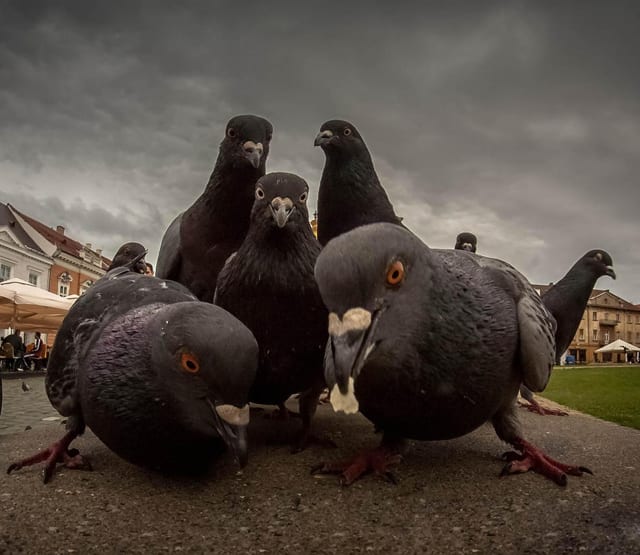
by Pigeon Patrol | Jul 6, 2023 | Bird Spike, Pigeon Predators, Pigeon Spikes, Pigeons, Pigeons in the News, Raccoons, Sparrows, UltraSonic Bird Control
A number of pigeons found dead in traps along SkyTrain routes in Vancouver have sparked concern from the public, but the pest control company that runs these traps says it has nothing to do with neglect.
Commuter Zahra Ahmdz started a petition against transit operator TransLink in the summer of 2021 after noticing the traps inside the Stadium-Chinatown station on her way to work, and what she said was very clearly multiple dead pigeons inside.
“It was very, very shocking. I didn’t think this would happen in Canada,” she said.
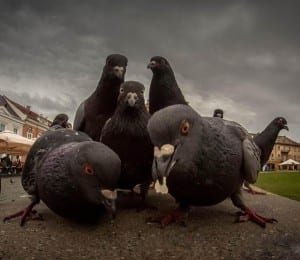
The traps are one of several methods TransLink uses to control the population of pigeons at SkyTrain stations, but the birds are never supposed to die inside. TransLink hires a pest control company to check the traps once a week, ensure there is adequate food and water inside and humanely kill any birds captured.
Media relations advisor Thor Diakow said it’s possible some pigeons did die inside the cages last summer, as TransLink was between pest control companies and didn’t maintain the cages itself in the meantime.
Ahmdz said the problem didn’t stopped there though.
Photos she said she took in March and May appear to show more dead pigeons inside the cages. And Ahmdz said after she complained to TransLink and the BC SPCA, small barriers were erected making it more difficult for her to see the birds.
“This is cruelty,” Ahmdz said.
Pest control company claims no neglect
The pest control company in charge of the cages disagrees. Atlas Pest And Wildlife Control has been working for TransLink since around November or December 2021, according to its president Raymond Arthurs. He readily admitted that they sometimes find pigeons dead inside the cages during their weekly checks, but said it’s not because of neglect on their part.
“Sometimes a hawk will get inside and kill them,” Arthurs said. “That’s kind of all natural.”
As for the barriers, Arthurs said they’re partially to stop people from tampering with the cages and partially to protect the birds from water dripping from the ceiling or other elements.
He said if the weather drops below zero, they leave the cages open as they know the water bowls inside will freeze over. They don’t have a system in place yet for hot weather, as they haven’t worked a summer for TransLink yet, Arthurs added.
He said he couldn’t comment on the exact number of pigeons that have died in his company’s cages. They keep weekly records of their activities, but Arthurs said only TransLink can decide who to provide them to. TransLink agreed to give them to Black Press Media, but said they weren’t available at the time of publication.
A move toward birth control
Both emphasized that they are starting to move away from traps and towards birth control methods.
The BC SPCA pushed TransLink to pilot test OvoControl birth control in several stations for 18 months in 2019 and 2020 after similar complaints about trapped pigeons were brought forward.
BC SPCA chief scientific officer Sara Dubois said the results were exactly what they expected – the population stabilized. She said she was disappointed when TransLink chose not to continue with the long-term solution.
More than a year later though, Diakow said TransLink is now recommitting to the method and will have permanent OvoControl dispensers in some SkyTrain stations come summer.
TransLink also uses bird spikes, netting and low-charge electric strips to deter pigeons from roosting in stations. Diakow said their main concern is the potential for bacterial infections from the birds’ droppings, but that pigeons are also one of a number of animals that regularly set off TransLink’s highly sensitive intrusion alarms.
In 2021, Diakow said wildlife set off the alarms 544 times, resulting in between 12 and 20 hours of transit delays. He said it’s impossible to know how many pigeons alone were responsible for.
Feeding wildlife is feeding the problem
He and Dubois said a large part of the problem is people drawing the pigeons to the stations.
“There’s these regulars that always show up and feed the birds,” Diakow said.
Often times, he said they do so just off TransLink property, so staff can’t actually do anything about it.
Dubois said she’s hopeful Vancouver’s new bylaw banning feeding wildlife in city parks could help, though. She said she’d like to see TransLink work with bylaw on solutions.
Diakow said they’re looking into putting up signage at the stations.
Source
Pigeon Patrol Products & Services is the leading manufacturer and distributor or bird deterrent (control) products in Canada. Pigeon Patrol products have solved pest bird problems in industrial, commercial, and residential settings since 2000, by using safe and humane bird
deterrents with only bird and animal friendly solutions. At Pigeon Patrol, we manufacture and offer a variety of bird deterrents, ranging from Ultra-flex Bird Spikes with UV protection, Bird Netting, 4-S Bird Gel and the best Ultrasonic and audible sound devices on the market today.
Voted Best Canadian wholesaler for Bird Deterrent products ten years in a row.
Contact us at 1 877-4-NO-BIRD,(604) 585-9279 or visit our website at www.pigeonpatrol.ca
Pigeon/Pigeon Patrol / Pigeons Roosing / Vancouver Pigeon Control / Bird Spikes / Bird Control / Bird Deterrent / PIgeon Deterrent / Surrey Pigeon Control / Pest / Seagull deterrent / Vancouver Pigeon Blog / Birds Inside Home / Pigeons in the cities / Ice Pigeons / What to do about pigeons / sparrows, Damage by Sparrows, How to Keep Raccoons Away, Why Are Raccoons Considered Pests / De-fence / Pigeon Nesting / Bird Droppings / Pigeon Dropping / woodpecker control / Professional Bird Control Company / Keep The Birds Away / Birds/rats/seagull/pigeon/woodpecker/dove/sparrow/pidgeon control/pidgeon problem/pidgeon control/flying rats/pigeon problems/ bird netting/bird gel/bird spray/bird nails/bird guard
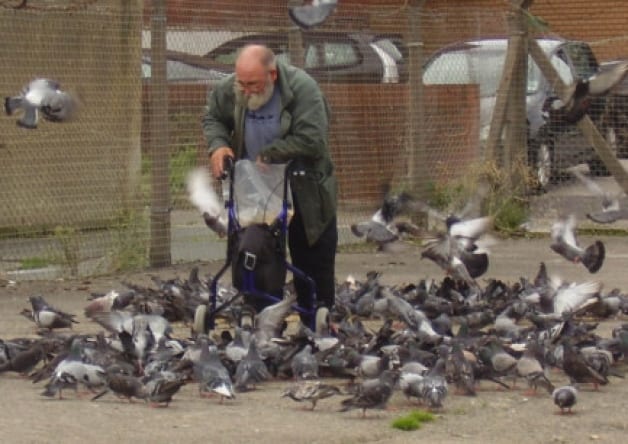
by Pigeon Patrol | Jul 6, 2023 | Bird Spike, Pigeon Droppings, Pigeon Patrol's Services, Pigeon Predators, Pigeon Spikes, Pigeons
Pigeons are often referred to as ‘rats with wings’ and like rats they have adapted well to live side by side with humans in our environment. Vast amounts of buildings and structures provide the perfect perch for pigeons to rest and our food waste and crops provide a healthy supply of food as they will eat anything they can find. Our lifestyle has eliminated any potential predators or competitors so pigeons have been allowed to thrive.
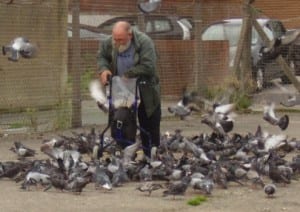
Before you try and deal with a pigeon problem on your own it is important to remember that they are not just your average pest! It requires a level of skill, expertise and a bit of imagination. A control method that works in one instance will not necessarily work in another. This is why it often requires several strategies used in unison. Whether you want to give it a go yourself or just see what options there are you will find all the pigeon control methods you need to know below.
Pigeon Control
Live Pigeon Traps – This is a highly recommended control method. Bob traps work well in most cases. Use a bait, wheat or corn will do, the birds will enter the trap through a one-way door so once inside they can’t get back out. Leave a few pigeons inside the trap as this will encourage more of these social birds into the trap. Only try this method if you are willing to kill the birds once they are caught because releasing them will not solve the problem. Call a professional pest control company if you are unsure.
Exclusion – Exclusion also known as pigeon proofing involves modifying your property to make it inaccessible to pigeons, no place to land means no pigeons! Pigeon spikes, bird slopes, bird netting, bird wires, electrified tracks and wiring can all be effective at deterring pigeons. It requires a level of skill to install thee product so it’s important to remember this before you run off to the shops and buy one of these proofing methods. Pigeon proofing can be expensive but it is also very effective and the short-term cost can save you a lot of money in the long run so it is important that they are installed properly.
Pigeon Repellents – This is a control method that makes a pigeons roosting area inhospitable without causing any harm to the bird. They are often in gel or liquid form, usually, soft, sticky or hot. It irritates the birds when they land making them fly off and find somewhere else. This is a good quick fix; these products are cheap and easy to use. However, the downside is it is only a temporary fix and can be a mess job.
Source
Pigeon Patrol Products & Services is the leading manufacturer and distributor or bird deterrent (control) products in Canada. Pigeon Patrol products have solved pest bird problems in industrial, commercial, and residential settings since 2000, by using safe and humane bird
deterrents with only bird and animal friendly solutions. At Pigeon Patrol, we manufacture and offer a variety of bird deterrents, ranging from Ultra-flex Bird Spikes with UV protection, Bird Netting, 4-S Bird Gel and the best Ultrasonic and audible sound devices on the market today.
Voted Best Canadian wholesaler for Bird Deterrent products ten years in a row.
Contact us at 1 877-4-NO-BIRD,(604) 585-9279 or visit our website at www.pigeonpatrol.ca
Pigeon/Pigeon Patrol / Pigeons Roosing / Vancouver Pigeon Control / Bird Spikes / Bird Control / Bird Deterrent / PIgeon Deterrent / Surrey Pigeon Control / Pest / Seagull deterrent / Vancouver Pigeon Blog / Birds Inside Home / Pigeons in the cities / Ice Pigeons / What to do about pigeons / sparrows, Damage by Sparrows, How to Keep Raccoons Away, Why Are Raccoons Considered Pests / De-fence / Pigeon Nesting / Bird Droppings / Pigeon Dropping / woodpecker control / Professional Bird Control Company / Keep The Birds Away / Birds/rats/seagull/pigeon/woodpecker/dove/sparrow/pidgeon control/pidgeon problem/pidgeon control/flying rats/pigeon problems/ bird netting/bird gel/bird spray/bird nails/bird guard
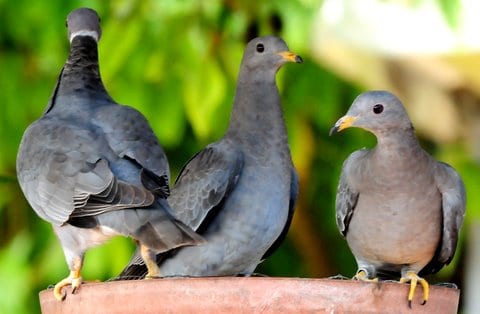
by Pigeon Patrol | Jul 6, 2023 | Bird Law, Bird Netting, Bird Spikes, Columbidae, Doves, Pigeon Droppings, Pigeon Patrol's Services
A team of scientists and conservationists has rediscovered the elusive Black-naped Pheasant-Pigeon, a large, ground-dwelling pigeon that only lives on Fergusson Island, a rugged island in the D’Entrecasteaux Archipelago off of eastern Papua New Guinea. Like other pheasant-pigeons, the Black-naped Pheasant-Pigeon has a broad and laterally compressed tail, which, along with its size, makes it closely resemble a pheasant. The bird has been observed several times over the years by local hunters, but the newly taken photographs and video are the first time the bird has been documented by scientists since 1882, when it was first described. Ornithologists know very little about the species, but believe that the population on Fergusson is very small and decreasing.
The research team photographed the pheasant-pigeon with a remote camera trap at the end of a month-long search of Fergusson.
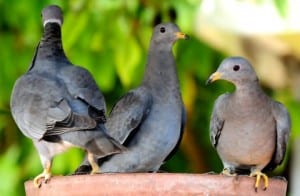
“When we collected the camera traps, I figured there was less than a one-percent chance of getting a photo of the Black-naped Pheasant-Pigeon,” said Jordan Boersma, postdoctoral researcher at Cornell University and co-leader of the expedition team. “Then as I was scrolling through the photos, I was stunned by this photo of this bird walking right past our camera.”
“After a month of searching, seeing those first photos of the pheasant-pigeon felt like finding a unicorn,” added John C. Mittermeier, Director of the Lost Birds program at ABC and co-leader of the expedition. “It is the kind of moment you dream about your entire life as a conservationist and birdwatcher.”
The expedition team — which included local Papua New Guineans working with Papua New Guinea National Museum, Cornell Lab of Ornithology, and American Bird Conservancy — arrived on Fergusson in early September 2022. They spent a month traveling around the island, interviewing local communities to identify locations to set up camera traps in hopes of finding the pheasant-pigeon. The steep, mountainous terrain on Fergusson Island made searching for the bird extremely challenging.
“It wasn’t until we reached villages on the western slope of Mt. Kilkerran that we started meeting hunters who had seen and heard the pheasant-pigeon,” said Jason Gregg, conservation biologist and a co-leader of the expedition team. “We became more confident about the local name of the bird, which is ‘Auwo,’ and felt like we were getting closer to the core habitat of where the Black-naped Pheasant-Pigeon lives.”
The expedition was the first-ever camera trapping study conducted on Fergusson Island. The team placed 12 camera traps on the slopes of Mt. Kilkerran, Fergusson’s highest mountain, and deployed an additional eight cameras in locations where local hunters had reported seeing the pheasant-pigeon in the past.
“When we finally found the Black-naped Pheasant-Pigeon, it was during the final hours of the expedition,” said Doka Nason, the member of the team who set up the camera trap that eventually photographed the lost bird. “When I saw the photos, I was incredibly excited.”
A local hunter named Augustin Gregory in the village of Duda Ununa west of Mt. Kilkerran provided a breakthrough lead on where to find the bird. Gregory reported seeing the pheasant-pigeon on multiple occasions in an area with steep ridges and valleys and described hearing the bird’s distinctive calls.
Following Gregory’s advice, the team set up cameras in an area of dense forest. A camera placed on a ridge at 3,200 feet (1,000 meters) near the Kwama River above Duda Ununa eventually captured the Black-naped Pheasant-Pigeon walking on the forest floor two days before the team was scheduled to leave the island.
Several members of the team have attempted to find the Black-naped Pheasant-Pigeon before. A two-week survey in 2019 by Boermsa, Gregg, and Nason didn’t find any traces of the bird, though it did gather reports from local hunters of a bird that could have been the pheasant-pigeon. The results from that survey helped to determine locations for the team to search in 2022.
“The communities were very excited when they saw the survey results, because many people hadn’t seen or heard of the bird until we began our project and got the camera trap photos,” said Serena Ketaloya, a conservationist from Milne Bay, Papua New Guinea. “They are now looking forward to working with us to try to protect the pheasant-pigeon.”
The team’s findings suggest that the pheasant-pigeon is likely to be extremely rare. The rugged and inaccessible forest where they rediscovered the species could be the last stronghold for the species on the island.
“This rediscovery is an incredible beacon of hope for other birds that have been lost for a half century or more,” said Christina Biggs, Manager for the Search for Lost Species at Re:wild. “The terrain the team searched was incredibly difficult, but their determination never wavered, even though so few people could remember seeing the pheasant-pigeon in recent decades.”
“As well as giving hope for searches for other lost species, the detailed information collected by the team has provided a basis for conservation of this extremely rare bird, which must indeed be highly threatened, together with the other unique species of Fergusson Island,” said Roger Safford, Senior Program Manager for Preventing Extinctions at BirdLife International.
The expedition was supported by American Bird Conservancy (ABC) and The Search for Lost Birds, a collaboration between BirdLife International, ABC, and Re:wild. The Search for Lost Birds identified the pheasant-pigeon for an expedition after a global review revealed it was one of a few bird species that have been lost to science for more than a century.
The full expedition team consisted of Jordan Boermsa, Jason Gregg, Doka Nason, Serena Ketaloya, Elimo Malesa, Bulisa Iova, Cosmo Le Breton, and John C. Mittermeier. The expedition was funded by ABC and The Search for Lost Birds, with a grant from Cosmo Le Breton, who helped to support the team in the field as a research assistant.
Source
Pigeon Patrol Products & Services is the leading manufacturer and distributor or bird deterrent (control) products in Canada. Pigeon Patrol products have solved pest bird problems in industrial, commercial, and residential settings since 2000, by using safe and humane bird
deterrents with only bird and animal friendly solutions. At Pigeon Patrol, we manufacture and offer a variety of bird deterrents, ranging from Ultra-flex Bird Spikes with UV protection, Bird Netting, 4-S Bird Gel and the best Ultrasonic and audible sound devices on the market today.
Voted Best Canadian wholesaler for Bird Deterrent products ten years in a row.
Contact us at 1 877-4-NO-BIRD,(604) 585-9279 or visit our website at www.pigeonpatrol.ca
Pigeon/Pigeon Patrol / Pigeons Roosing / Vancouver Pigeon Control / Bird Spikes / Bird Control / Bird Deterrent / PIgeon Deterrent / Surrey Pigeon Control / Pest / Seagull deterrent / Vancouver Pigeon Blog / Birds Inside Home / Pigeons in the cities / Ice Pigeons / What to do about pigeons / sparrows, Damage by Sparrows, How to Keep Raccoons Away, Why Are Raccoons Considered Pests / De-fence / Pigeon Nesting / Bird Droppings / Pigeon Dropping / woodpecker control / Professional Bird Control Company / Keep The Birds Away / Birds/rats/seagull/pigeon/woodpecker/dove/sparrow/pidgeon control/pidgeon problem/pidgeon control/flying rats/pigeon problems/ bird netting/bird gel/bird spray/bird nails/bird guard
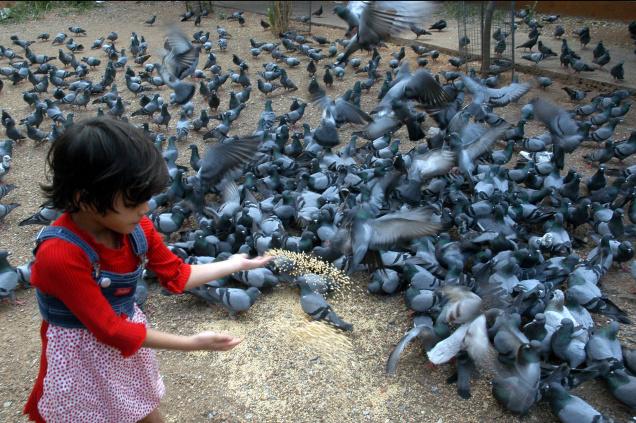
by Pigeon Patrol | Jul 6, 2023 | Bird Spike, Pigeon Spikes, Pigeons, Pigeons in the News, Raccoons, Sparrows, UltraSonic Bird Control
People often have no previous experience with pigeons or bird rescue. They did not wake up in the morning expecting to cross paths with a pigeon, but then an unexpected guest lands in their backyard, or on their roof, and it seems like something other than a random city pigeon. Perhaps it has an unusual appearance, or bands on its legs, perhaps it is alone with no flock, perhaps it seems weak or unable to fly. There’s no doubt that this is a pigeon in need of help, either because it is ill, starving, or a domestic breed lacking in survival skills. Pigeons and doves are preyed upon by hawks, ravens, gulls, cats, raccoons, rats, and more and, if you can catch the bird, she needs to be caught.
But how to catch?
First, rest assured that catching a pigeon is indeed possible, and safe- for both the bird and for you. Your catching the bird will be a lot safer for her than if a predator catches her. You will not scare a pigeon to death or give her a heart attack. And pigeons are harmless to us. They can’t really bite (no teeth and their beak is soft and weak) and, contrary to popular belief, you are highly unlikely to ever be made sick by a pigeon. There are very few diseases that you can catch from them and you are far, far more likely to get sick from a dog or cat (or be struck by lightning, actually). Simple soap-and-water hand washing after handling any animal can reduce the chances of illness to near zero.
So, let’s catch the pigeon!
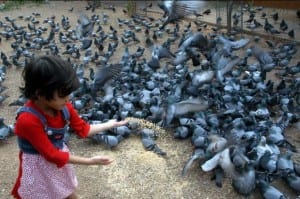
There are a few different methods that have a good success rate. Much will depend on what you are most comfortable with and what kind of shape the pigeon is in.
The first and easiest method is simply to scoop the pigeon up in your hands. People often tell us that they have found a pigeon that seems exceptionally tame and friendly and allowed itself to be picked up. If you can just pick it up, though, there’s a good chance that the pigeon is in real trouble. It may be starving, dehydrated, and/or injured.
A bird that tries to get away from you, but is weak or unable to fly, can often be walk-herded into a corner or inside through an open door and then caught (by hand or with a blanket, towel, or sweater). Drop the cloth over the bird and gently pick it up inside the cloth. Make sure the bird’s wings are folded against its sides, and hold it so that your hands encircle the wings and body, to prevent panicked flapping. A bird in this condition will likely need to be assessed by an expert.
Is your visitor lively? Flies away when you get too close? It’s good to see a strong and healthy pigeon, but this will present a challenge in actually getting your hands on the bird. The method that most often succeeds in catching a bird that is unwilling to be caught, is the crate-and-string method. You’ll need a cage or crate of some kind — a black wire dog crate works well. Put seeds and water deep in the center of the cage (beyond the reach of a clever bird who pokes her head in from the sides or back), and a thin trail of seeds leading up to the cage door (not too much, the bird needs to be hungry to risk entering what they know is a trap). Pigeons are especially fond of chopped peanuts and safflower seeds, but an ordinary bird seed mix for either pet or wild birds will work. Even rice -cooked or raw- can work in a pinch (there is a persistent myth that rice is harmful for birds, but it’s actually fine to use) or dry lentils, quinoa, crushed cereal, etc. will work for a hungry bird.
You’ll want to tie a long piece of string to the cage door in such a way as, when you pull it, the door pulls closed, and then sit at some distance, with the string in your hand. You might need to be out of the bird’s line of vision if it is particularly skittish. Eventually the bird should enter the cage to get the food, at which point you will pull on the string to close the door. Be patient. This can take some time (days even, just leave the door open when you’re not around & only put food inside so they have to go in) but is a very reliable and bird-friendly method. If the pigeon panics after the door is closed and starts thrashing around, cover the crate with a blanket to help calm her and bring the crate and bird indoors to safety. (You can’t leave her outside as predators can do terrible damage to an unsafely confined bird.) And don’t feel badly about having caught her. You most likely just saved her life and she’ll calm down.
Another method for catching a healthy unwilling pigeon is what we call the Wile E. Coyote box trap. Take a medium size box or laundry basket, turn it upside down and prop up one end with a stick. Place food and water underneath the box, with a trail leading up to it. Tie a string to the bottom part of the stick, and sit at a distance away with the other end of the string in your hand. When the pigeon ventures under the box to get the food, pull the string to remove the stick, and the box will fall, trapping the pigeon underneath.
You will at this point need to carefully reach underneath the box to get the pigeon. You won’t be able to see what you’re doing, because if you lift the box too high the pigeon will escape. You might try putting a big blanket over the box and yourself, while you try to catch the pigeon. Your neighbors will wonder about you. But it can work.
You can also buy or create a humane trap with a one-way door so that once they’ve gone in, they can’t get back out. (Monitor the trap closely though and do not leave out unsupervised or overnight. Once trapped, the bird will attract and be terribly vulnerable to predators including rats, cats, hawks, raccoons, ravens, gulls, dogs, etc.)
A third method for catching a pigeon is to find where it is roosting at night. Pigeons have very poor night vision, and tend to hold still in the dark if they sense danger approaching, hoping that it passes them by. You may be able to climb a ladder and grab the pigeon with your hands. This works best if done in the dark so turn lights off and let your eyes adjust (yours will, the pigeon’s won’t). Then very quietly and without hesitation, grab the bird with both hands around the body. Be prepared for her to startle and try to get away. Don’t let go and make that first grab count because if she gets away, she’ll risk flying off even in the dark.
The final method is one that takes a bit of practice, plus good reflexes and careful timing. It is best used on a pigeon that is hanging out with a wild flock, and it’s the method that we use for “destringing” work, when we are trying to catch wild pigeons who are suffering from injuries to their feet caused by string and debris wrapped around their toes (ever wondered why city pigeons often have missing toes or deformed feet? Now you know!) With this method, you’ll spread a generous amount of food on the ground, in a line that measures three or four inches wide and about a foot and a half long. Stand fairly close to the food with your feet spread a distance apart. The pigeons should approach and cluster around, trying to eat as much as possible and certainly more than the pigeons on either side of them. They will be eyeing the food and each other, while you stand nearby, periodically sprinkling more food. Keep your eye on the pigeon you want to catch. Slowly advance until your open hand is hovering, palm down, immediately above the pigeon, then, in one swift motion, drop your hand down, pinning the bird to the ground. It really helps to practice this multiple times, using a shoe or a loaf of bread in place of the pigeon. You’re going to be going very quickly from a standing to a crouching or lunging position, and you don’t want to topple over, so practice the motion until you feel confident.
If you try and miss, the pigeons may scatter and be skittish for a time, but overcoming their caution is sometimes just a matter of moving the food to a slightly different location. You usually get multiple chances. This is not because pigeons are stupid (they are not), but because pigeons are more trusting than most birds (and very hungry). Despite a long history of mistreatment at the hands of human beings, their species, in general, has a benevolent view of ours.
Once caught, you must bring the bird indoors to safety. The vast majority of cages are made only to confine a bird indoors and are not at all safe outside. Leaving a bird outdoors in an indoor cage is basically creating a foraging toy for predators. Hawks, raccoons, cats, rats can all do terrible damage to an unsafely caged bird, right through the bars. Once safely indoors, you need to find a pigeon-friendly expert to help you assess the bird. Many are in critical condition by the time they are caught but recognizing that and supporting them through it takes knowledge and experience.
Source
Pigeon Patrol Products & Services is the leading manufacturer and distributor or bird deterrent (control) products in Canada. Pigeon Patrol products have solved pest bird problems in industrial, commercial, and residential settings since 2000, by using safe and humane bird
deterrents with only bird and animal friendly solutions. At Pigeon Patrol, we manufacture and offer a variety of bird deterrents, ranging from Ultra-flex Bird Spikes with UV protection, Bird Netting, 4-S Bird Gel and the best Ultrasonic and audible sound devices on the market today.
Voted Best Canadian wholesaler for Bird Deterrent products ten years in a row.
Contact us at 1 877-4-NO-BIRD,(604) 585-9279 or visit our website at www.pigeonpatrol.ca
Pigeon/Pigeon Patrol / Pigeons Roosing / Vancouver Pigeon Control / Bird Spikes / Bird Control / Bird Deterrent / PIgeon Deterrent / Surrey Pigeon Control / Pest / Seagull deterrent / Vancouver Pigeon Blog / Birds Inside Home / Pigeons in the cities / Ice Pigeons / What to do about pigeons / sparrows, Damage by Sparrows, How to Keep Raccoons Away, Why Are Raccoons Considered Pests / De-fence / Pigeon Nesting / Bird Droppings / Pigeon Dropping / woodpecker control / Professional Bird Control Company / Keep The Birds Away / Birds/rats/seagull/pigeon/woodpecker/dove/sparrow/pidgeon control/pidgeon problem/pidgeon control/flying rats/pigeon problems/ bird netting/bird gel/bird spray/bird nails/bird guard
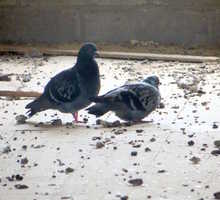
by Pigeon Patrol | Jul 6, 2023 | 4-S Gel Bird repellent, Animal Deterrent Products, Bird Deterrent Products, Bird Law, Bird Netting, Bird Spikes
First, you need to buy a pigeon trap. There are many models on the market, but most are basically large cages, with one-way entry doors.
Next, you need to set the trap in the area with the problem pigeons. You might want to wire the doors of the trap open for a few days, and set bait – cracked corn works great – in the center of the trap, and get the pigeons acclimated to feeding in the trap. Once they are used to entering the trap for the bait, you can set the trap for real. Pro Tip: Once a first pigeon enters, more will follow.
What do you do with the pigeons once you’ve trapped them? Well, you may have heard that pigeons are moderately competent at finding their way back home. Like, over oceans and stuff. They can see magnetic fields or something. So you can’t relocate them. That means you have to kill them, if you want to stop them from coming back.
Overall, it’s my opinion that pigeon exclusion methods, using spikes, electric track, or preventative netting, are the best ways to keep pigeons away for good. Far better than trapping.
Some people love to keep pigeons because they are smart, beautiful and in some cases even profitable. People will keep pigeons in pigeon coops and pigeon farms. You may not know it, but there are pigeon race competitions where people will release a pigeon away from their home and count the time it takes for the pigeon to return. Restaurants are serving pigeon as a delicacy and farms that raise pigeons are now making more and more money.
When these birds aren’t raised for pets they can become quite the nuisance, leaving droppings everywhere and causing damage to buildings. In this case they are no longer the source to relieve some stress; these pigeons are, in fact the cause of your stress. Because of this you may be looking for tips on how to trap them and if you are, you have come to the right place.
Live Traps
If you have a new pigeon problem, meaning that it started a month or two ago then you can use live traps as a way to trap the pigeons. These birds are very smart and that is why they have been trained and used by humans in many different situations from war time to the pigeon races. Because of this level of intelligence you must know what you are doing with a pigeon cage. The right bait is absolutely necessary and you can check when you purchase the cage what the best bait is. You also have to make sure that you conceal the cage to make sure that the bird does not mind going inside. Some of the best bait includes seeds that you may have purchased at your local supermarket. There is no need to get fancy when trapping pigeons.
Get Them Used to You
You will never trap the pigeons if they have no reason to come to you or into your trap. Fortunately that can be done by using corn every day. All that you have to do is get some corn and spread in the area where pigeons usually gather. When pigeons get used to the idea of getting food without actually having to hunt it or scavenge it they will keep coming back for more. Once you have them in the location every day, you want to put some of that same corn inside the cage. Now keep in mind that pigeons are fast, so you should get a trap that’s specifically designed for them. Getting another one could actually hurt the bird. These traps can be purchased at home and gardening stores everywhere and they are not harmful to the pigeons. It’s important to remove animals humanely in every situation possible.
They Will Keep Coming Back
Unless the pigeons have just found your place there is a very good chance that they will keep coming back. As mentioned before, some people make a living with pigeon races, which consists of releasing the bird and letting it find its roost. This means in addition to trapping and releasing the birds you will also need to consider what you will do to prevent them from making a roost out of your home a second time. There are many different deterrent options for pigeons. There are fences, netting and stakes that are safe and meant to keep the birds from being able to comfortably land. You will want to have a plan that uses a combination of trapping and deterrents to keep your home pigeon free.

Pigeon Trapping: How to Trap a Pigeon – Homeowners go looking for pigeon traps mostly after their pigeon problem refuses to go away with repellent interventions. Those birds just don’t know when they have overstayed their welcome and they beat the repellents every time because they’re so intelligent. For trapping, you may choose to go with either lethal or live traps.
Lethal traps
Lethal traps kills the pigeon as soon as it enters into the cage by means of a snapping or constricting mechanism. Lethal traps get rid of any pigeon captured permanently, but the intelligence of the bird is their shortcoming. When one pigeons is caught and killed, the other members of the flock will alert each other to the danger posed by the trap and none will go near it again.
The other issue with lethal trapping is that it is illegal in many areas because of its inhumane manner of getting rid of pigeons. It can also be very difficult for homeowners who are not animal control professionals, to set and use lethal traps without injuring themselves.
Live pigeon traps
The most common design of the live pigeon trap is the one-door trap. As the name suggests, it has only one door through which the pigeons enter and it is built to accommodate many birds at once. When setting this trap, know that once one pigeon enters, the others will follow. The Tomahawk Extra live pigeon trap for instance, can trap up to thirty pigeons at a time. There are also other examples like the collapsible pigeon traps. Follow the following steps to trap pigeon alive:
- Start out by getting some seed bait and spreading it out for the birds in a particular location. Repeat this over a couple of days so this eating pattern can be established for them.
- The pigeons will start returning to this spot everyday once the feeding is regular. Once this is established, get your cage ready.
- Introduce the cage trap to the location and put the seed inside it. Let them feast for another few days to gain their trust in the cage
- Set the trap to catch as many of them as possible.
As humane as live trapping seems, it is not always the best way to get rid of pigeons because after trapping and transporting them away from your abode, they are able to return to where they were captured on their own. For this reason, some people prefer to kill the birds after they’ve been trapped.
What to do after live trapping pigeons
The thing about trapping pigeons is that unlike other animals, live trapping and relocation rarely work to keep them away from your home. Pigeons are known for their amazing ability to navigate their way back home (where they roost) from anywhere they are taken to. It is this ability that made them so useful for sending communication in the olden days, and even during world wars I and II. It therefore holds that they will return to their roost spot in your house if you do trap and relocate them. It then seems that the only way to get rid of them after trapping, is to kill them; or modify your building structure to deter them from their roosting spot.
You have to decide what to do with your pigeons once you trap them – kill them or set them free. Whatever you choose, do it quickly so the pigeons do not suffer for long. If it is permitted for you to kill them where you live, do so quickly and humanely – by gassing or breaking their necks with pliers.
Bait
Traps need to be baited to attract the pigeons. Foods like grains, seeds, fruits and water, which are the birds’ favourites work best in luring them. For your trap to be effective, you should put this bait out for a period of time before actually putting it in a trap, so that the birds feel safe enough to enter your cage in large numbers.
You can use a pigeon as bait for other pigeons as well. They are social birds and are likely to perch and eat where a member of their species is, so keep a pigeon inside the cage and it will lure others in.
Source
Pigeon Patrol Products & Services is the leading manufacturer and distributor or bird deterrent (control) products in Canada. Pigeon Patrol products have solved pest bird problems in industrial, commercial, and residential settings since 2000, by using safe and humane bird
deterrents with only bird and animal friendly solutions. At Pigeon Patrol, we manufacture and offer a variety of bird deterrents, ranging from Ultra-flex Bird Spikes with UV protection, Bird Netting, 4-S Bird Gel and the best Ultrasonic and audible sound devices on the market today.
Voted Best Canadian wholesaler for Bird Deterrent products ten years in a row.
Contact us at 1 877-4-NO-BIRD,(604) 585-9279 or visit our website at www.pigeonpatrol.ca
Pigeon/Pigeon Patrol / Pigeons Roosing / Vancouver Pigeon Control / Bird Spikes / Bird Control / Bird Deterrent / PIgeon Deterrent / Surrey Pigeon Control / Pest / Seagull deterrent / Vancouver Pigeon Blog / Birds Inside Home / Pigeons in the cities / Ice Pigeons / What to do about pigeons / sparrows, Damage by Sparrows, How to Keep Raccoons Away, Why Are Raccoons Considered Pests / De-fence / Pigeon Nesting / Bird Droppings / Pigeon Dropping / woodpecker control / Professional Bird Control Company / Keep The Birds Away / Birds/rats/seagull/pigeon/woodpecker/dove/sparrow/pidgeon control/pidgeon problem/pidgeon control/flying rats/pigeon problems/ bird netting/bird gel/bird spray/bird nails/bird guard
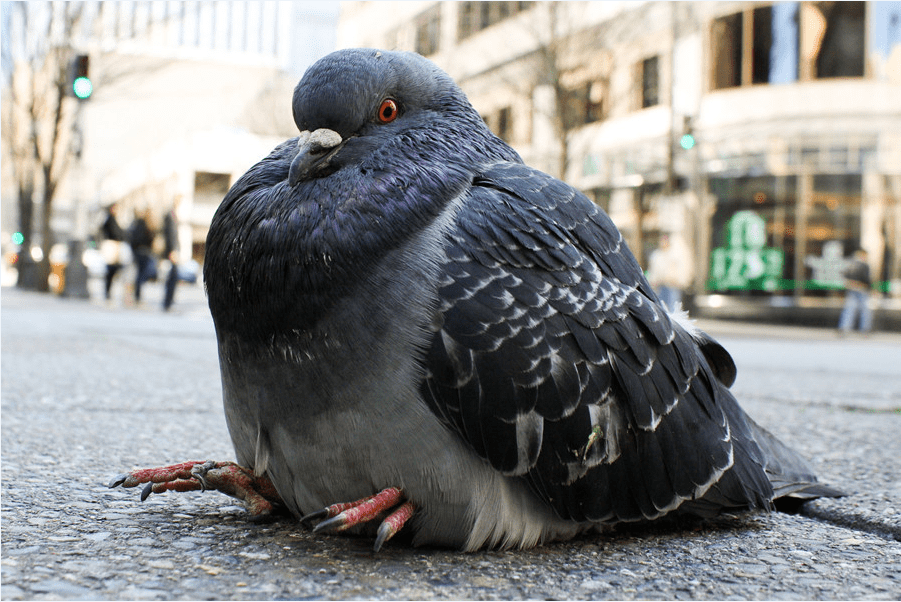
by Pigeon Patrol | Jun 30, 2023 | 4-S Gel Bird repellent, Animal Deterrent Products, Bird Deterrent Products, Bird Law, Bird Netting, Bird Spikes
Feral pigeons are the number one nuisance bird in urban areas, yet many municipalities are washing their hands of the dirty birds.
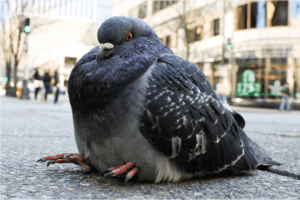
In 2013, the City of Trail, British Columbia (in the Kootenay Region of the Province’s interior) made national headlines when they scrapped a plan to relocate thousands of pigeons that plague the area to a pigeon sanctuary, only to find out that no such place exists. In the end, the city simply enacted legislation making it illegal to feed the birds and waited for them to go away.
While this sort of solution might seem appropriate to a cash strapped city council, it leaves local residents stuck with a bird problem. If you’ve got pigeons, you know how messy they can be. Their droppings cover everything underneath their resting place, and the uric acid it contains will ruin just about anything in its path. The feces can also transmit fungal, viral, and bacterial disease. They will nest in rooftop vents and air-conditioning units, causing further property damage. The long and short of the matter is that pigeons are poor roommates.
Pigeons are a year-round issue around and on homes. Roof lines provide birds with a vantage point overlooking the area surrounding your home, and most likely a regular source of food such as the neighbor’s garden. There are many other areas of the pigeons to roost such as external pipework, windowsills or worse – the chimney.
A statistic that may be the push for addressing this problem: Birds can harbor over 40 types of parasites and host internally 60 types of infectious diseases. These can be transmitted through the bird droppings found around your home.
Source
Pigeon Patrol Products & Services is the leading manufacturer and distributor or bird deterrent (control) products in Canada. Pigeon Patrol products have solved pest bird problems in industrial, commercial, and residential settings since 2000, by using safe and humane bird
deterrents with only bird and animal friendly solutions. At Pigeon Patrol, we manufacture and offer a variety of bird deterrents, ranging from Ultra-flex Bird Spikes with UV protection, Bird Netting, 4-S Bird Gel and the best Ultrasonic and audible sound devices on the market today.
Voted Best Canadian wholesaler for Bird Deterrent products ten years in a row.
Contact us at 1 877-4-NO-BIRD,(604) 585-9279 or visit our website at www.pigeonpatrol.ca
Pigeon/Pigeon Patrol / Pigeons Roosing / Vancouver Pigeon Control / Bird Spikes / Bird Control / Bird Deterrent / PIgeon Deterrent / Surrey Pigeon Control / Pest / Seagull deterrent / Vancouver Pigeon Blog / Birds Inside Home / Pigeons in the cities / Ice Pigeons / What to do about pigeons / sparrows, Damage by Sparrows, How to Keep Raccoons Away, Why Are Raccoons Considered Pests / De-fence / Pigeon Nesting / Bird Droppings / Pigeon Dropping / woodpecker control / Professional Bird Control Company / Keep The Birds Away / Birds/rats/seagull/pigeon/woodpecker/dove/sparrow/pidgeon control/pidgeon problem/pidgeon control/flying rats/pigeon problems/ bird netting/bird gel/bird spray/bird nails/bird guard
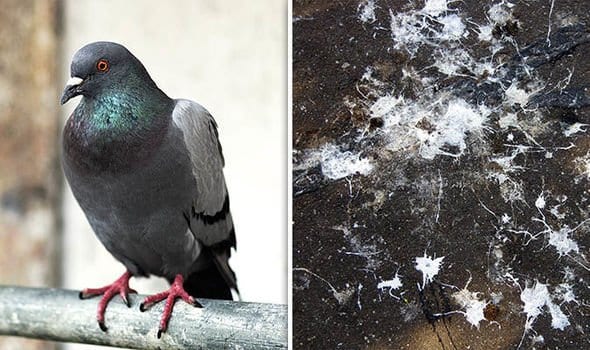
by Pigeon Patrol | Jun 30, 2023 | Bird Spike, Pigeon Predators, Pigeon Spikes, Pigeons, Pigeons in the News, Raccoons, Sparrows, UltraSonic Bird Control
If you don’t want pigeons nesting around your property, there are a number of ways you can scare them off when it looks like they might be getting comfortable.
Spray With Water
A great way to scare pigeons away without causing them any harm is to spray them with the garden hose. It’s highly unlikely they’ll appreciate getting drenched so you can guarantee they won’t hang around for long.
It’s important to do this when the birds first arrive so they know this isn’t a comfortable place to set up home. If you wait until they’ve set up a roost, not even a good soaking will get them to budge.
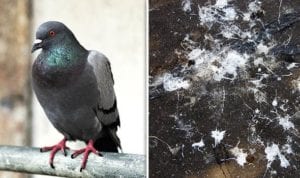
Install Scare-Pigeons
These lightweight kites are usually sold in the form of hawk silhouettes and when placed where pigeons usually roost, they’re a great scare tactic. A good tip is to move the decoy on a regular basis because pigeons will get used to its presence and won’t be scared of it anymore – especially because it doesn’t make a noise.
Use Reflective Surfaces
When the sun hits a reflective object, it creates a prism effect which interferes with pigeons’ eyesight. If your roof, balcony or windowsills are covered with anything from reflective tape to foil balloons, it’s highly unlikely they will settle. Another great way to deter pigeons from settling around your property is to hang old CDs from nearby trees or along awnings.
Install Sloped Sheathing
To keep pigeons off ledges and other flat surfaces, cover them with a sloping piece of sheet metal. If they physically can’t settle somewhere then they won’t.
When To Call A Pest Controller
The best way to deal with a pigeon problem is to call a pest controller. They will know exactly how to get rid of them and importantly, how to keep them away for good.
Pest control companies are well training on what systems to install to provide the best solution to your problem. From installing a netting system to anti-pigeon spikes, or wire systems on window ledges and leading edges.
What Won’t Work
There are many myths surrounding pigeons and how to scare them away but unfortunately, most of them are a waste of time because they simply don’t work.
- Noises – Everyone assumes that loud noises will scare these birds away but if you consider the pigeon population of London, it’s evident that this simply isn’t true. Pigeons are city birds – they’re used to loud noises and they don’t startle easily so unfortunately, no amount of noise is likely to drive them away.
- Ultrasonic Noises – Ultrasonic noise may seem like a great way to scare off pigeons but sadly, this method doesn’t work either. Ultrasonic sound waves bounce off objects, creating spots where pigeons can completely avoid the sound. Not only will you still be faced with a pigeon problem, these devices can also damage the hearing of cats and dogs.
- Ignoring the problem – Sadly burying your head in the sand won’t make these pests go away. Once they have found an Idyllic home location they will settle for life, so If left untreated the population will grow and grow, and so will the impact on your premises and surrounding area
Source
Pigeon Patrol Products & Services is the leading manufacturer and distributor or bird deterrent (control) products in Canada. Pigeon Patrol products have solved pest bird problems in industrial, commercial, and residential settings since 2000, by using safe and humane bird
deterrents with only bird and animal friendly solutions. At Pigeon Patrol, we manufacture and offer a variety of bird deterrents, ranging from Ultra-flex Bird Spikes with UV protection, Bird Netting, 4-S Bird Gel and the best Ultrasonic and audible sound devices on the market today.
Voted Best Canadian wholesaler for Bird Deterrent products ten years in a row.
Contact us at 1 877-4-NO-BIRD,(604) 585-9279 or visit our website at www.pigeonpatrol.ca
Pigeon/Pigeon Patrol / Pigeons Roosing / Vancouver Pigeon Control / Bird Spikes / Bird Control / Bird Deterrent / PIgeon Deterrent / Surrey Pigeon Control / Pest / Seagull deterrent / Vancouver Pigeon Blog / Birds Inside Home / Pigeons in the cities / Ice Pigeons / What to do about pigeons / sparrows, Damage by Sparrows, How to Keep Raccoons Away, Why Are Raccoons Considered Pests / De-fence / Pigeon Nesting / Bird Droppings / Pigeon Dropping / woodpecker control / Professional Bird Control Company / Keep The Birds Away / Birds/rats/seagull/pigeon/woodpecker/dove/sparrow/pidgeon control/pidgeon problem/pidgeon control/flying rats/pigeon problems/ bird netting/bird gel/bird spray/bird nails/bird guard
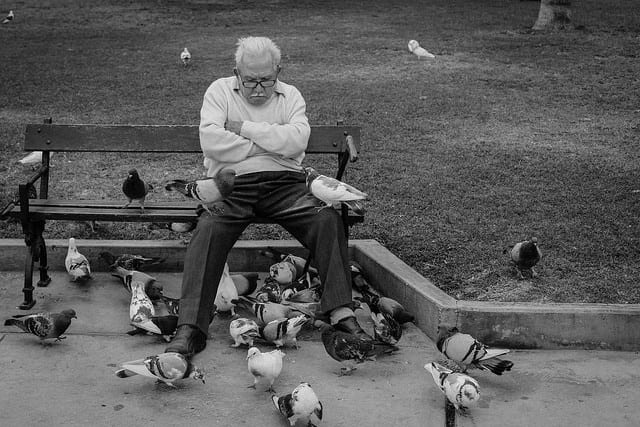
by Pigeon Patrol | Jun 30, 2023 | Bird Spike, Pigeon Predators, Pigeon Spikes, Pigeons, Pigeons in the News, Raccoons, Sparrows
From telephone wires to building ledges to public fountains, pigeons can be found nearly everywhere in a city. Unfortunately, that often means you can find them on your property, too. One pigeon may not be cause for alarm, but if pigeons have become regular visitors to your yard, you may have a problem on your hands. No homeowner wants to have to put up with these pests, but you can’t exactly just order them to leave. What should you do when you have a growing pigeon infestation? Here’s what you need to know.
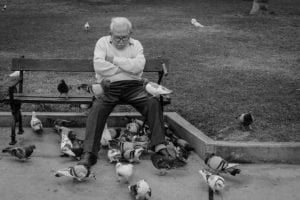
How Can I Tell if I Have a Pigeon Problem?
Much of the time, pigeon infestations are impossible to miss. Pigeons are relatively large, and their sounds are difficult to ignore. If you’re away from home a lot, or if you have a large yard, it may be easier for you to overlook a burgeoning pigeon infestation. If you find feathers, nesting materials, or pigeon droppings in your yard or on your roof, it’s a likely warning sign that the pests have invaded your property.
Will Pigeons Go Away if I Leave Them Alone?
You might be tempted to ignore the issue and just hope that the pigeons will go away on their own—and, on occasion, they will. It’s more likely, however, that the pigeons will not want to leave a place where they can roost and raise families undisturbed. This means that you’ll eventually begin to see more and more pigeons until your yard is overwhelmed with the birds. As a rule, the longer you wait to deal with a pest infestation, the larger that problem will become.
Can Pigeons Do Damage to My Property?
While some birds might be a welcome presence on your property, pigeons generally are not. There are good reasons for that: Pigeons make a mess, they’re noisy, and they’re a health hazard. They can also wreak extensive—and expensive—damage on your property, including your roof, your car, and even your solar panels. They can ruin your garden or your landscaping. In other words, these pests could end up costing you a lot of money. If you have pigeons on your property, you need to do something about it as soon as possible.
Can I Solve a Pigeon Problem On My Own?
You might assume that it would be easy to get rid of pigeons. Unfortunately, it takes more than going outside and waving your arms at the birds or shouting at them to discourage them from coming back. You might temporarily scare the birds away, but they’re likely to return as soon as you go back inside. Don’t bother using popular pigeon-removal methods such as cayenne pepper—these techniques don’t work. Putting up plastic owls and other deterrents also isn’t very likely to keep pigeons out of your yard. You shouldn’t waste time with these do-it-yourself methods.
What Can I Do to Get Rid of Pigeons?
The best thing to do if you have a pigeon infestation is to call a qualified pigeon control professional. A pigeon control company can put up structures such as netting to prevent pigeons from nesting or roosting around your property. They can also clean and sanitize the areas where the pigeons were taking up residence, helping to keep you and the other members of your household safe. Finally, a pigeon control company may offer a guarantee on its services, so you won’t have to worry about the pests coming back in the future. When it comes to pigeon control, there’s no substitute for experience and professional equipment.
How Can I Prevent Pigeons from Returning?
After you’ve paid to get rid of pigeons once, it’s unlikely that you’ll ever want to have to deal with the problem again. In almost all cases, pigeon abatement is sufficient to keep the pests away. There are some other things you can do, however, to discourage pigeons from making a home on your property. Make sure al trash containers are covered, and clean up any food scraps on your patio right away. Don’t leave pet food to sit outdoors overnight. You should also look for standing water, which can attract the birds. Finally, keep an eye out for the birds and be sure to call your pigeon control company again if you see them roosting anywhere on your property.
Source
Pigeon Patrol Products & Services is the leading manufacturer and distributor or bird deterrent (control) products in Canada. Pigeon Patrol products have solved pest bird problems in industrial, commercial, and residential settings since 2000, by using safe and humane bird
deterrents with only bird and animal friendly solutions. At Pigeon Patrol, we manufacture and offer a variety of bird deterrents, ranging from Ultra-flex Bird Spikes with UV protection, Bird Netting, 4-S Bird Gel and the best Ultrasonic and audible sound devices on the market today.
Voted Best Canadian wholesaler for Bird Deterrent products ten years in a row.
Contact us at 1 877-4-NO-BIRD,(604) 585-9279 or visit our website at www.pigeonpatrol.ca
Pigeon/Pigeon Patrol / Pigeons Roosing / Vancouver Pigeon Control / Bird Spikes / Bird Control / Bird Deterrent / PIgeon Deterrent / Surrey Pigeon Control / Pest / Seagull deterrent / Vancouver Pigeon Blog / Birds Inside Home / Pigeons in the cities / Ice Pigeons / What to do about pigeons / sparrows, Damage by Sparrows, How to Keep Raccoons Away, Why Are Raccoons Considered Pests / De-fence / Pigeon Nesting / Bird Droppings / Pigeon Dropping / woodpecker control / Professional Bird Control Company / Keep The Birds Away / Birds/rats/seagull/pigeon/woodpecker/dove/sparrow/pidgeon control/pidgeon problem/pidgeon control/flying rats/pigeon problems/ bird netting/bird gel/bird spray/bird nails/bird guard
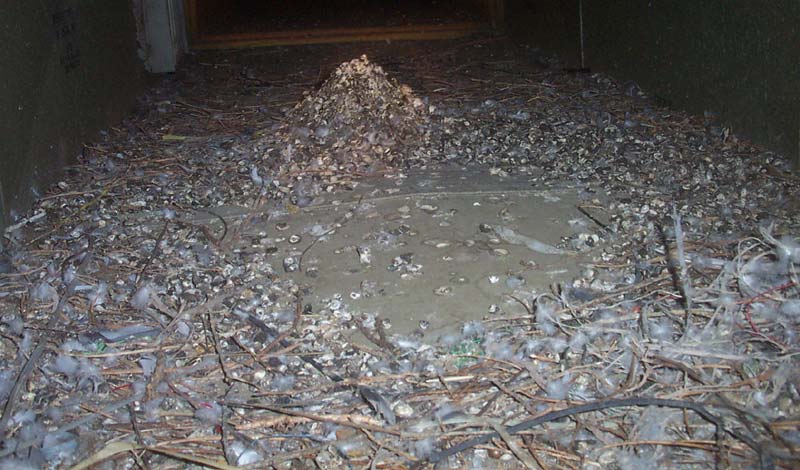
by Pigeon Patrol | Jun 30, 2023 | Bird Spike, Pigeon Spikes, Pigeons, Pigeons in the News, Raccoons, Sparrows, UltraSonic Bird Control
Q: I live on the 15th floor of an Upper East Side co-op with windows facing First Avenue. Pigeons are roosting on my window ledge. The birds’ vocalization is loud enough to wake me up in the morning and they leave behind gray and white stains from their droppings. I shoo the birds away when I’m home, but cannot do this all day. I want to be able to open my window in the spring without worrying that the germs from their droppings will enter my room. What can I place on my window ledge to discourage the pigeons from roosting there? I do not want to use anything that could fall off the ledge, endangering a pedestrian below, or poison the birds. What is a safe remedy?
A: You should be able to open your windows this spring without worrying that a pigeon will fly into your apartment or its droppings will soil your home. While their droppings do not generally pose a serious health risk, they are still unsanitary, and gross. But your building, not you, should get the birds off your ledge. As a shareholder, you are responsible for everything inside the walls of your apartment, and the co-op board is responsible for the building. So the board needs to figure out how to get the birds to find a new home.
“Residents should not attempt a solution on their own,” said Daniel Wollman, the chief executive of Gumley Haft, a Manhattan property manager.
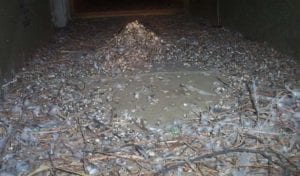
Write the managing agent and the co-op board a letter alerting them to the pigeon problem and insisting that they fix it. If the birds are nesting on your ledge, they are probably nesting on another resident’s, too. In the letter, ask that management also clean the ledge of any droppings.
The building should be able to get the birds to nest elsewhere without damaging the facade or risking the safety of anyone on the street below. For example, at a Gumley Haft-managed property with a pigeon problem in its inner courtyard, management suspended netting over the area to keep the birds away.
Netting will not solve the problem at your building, but there are other methods. John McGowan, the director of operations for Bugged Out Pest Management in Brooklyn suggested that your building consider using Bird Barrier Optical Gel, a bird deterrent, which he described as “awesome.”
Source
Pigeon Patrol Products & Services is the leading manufacturer and distributor or bird deterrent (control) products in Canada. Pigeon Patrol products have solved pest bird problems in industrial, commercial, and residential settings since 2000, by using safe and humane bird
deterrents with only bird and animal friendly solutions. At Pigeon Patrol, we manufacture and offer a variety of bird deterrents, ranging from Ultra-flex Bird Spikes with UV protection, Bird Netting, 4-S Bird Gel and the best Ultrasonic and audible sound devices on the market today.
Voted Best Canadian wholesaler for Bird Deterrent products ten years in a row.
Contact us at 1 877-4-NO-BIRD,(604) 585-9279 or visit our website at www.pigeonpatrol.ca
Pigeon/Pigeon Patrol / Pigeons Roosing / Vancouver Pigeon Control / Bird Spikes / Bird Control / Bird Deterrent / PIgeon Deterrent / Surrey Pigeon Control / Pest / Seagull deterrent / Vancouver Pigeon Blog / Birds Inside Home / Pigeons in the cities / Ice Pigeons / What to do about pigeons / sparrows, Damage by Sparrows, How to Keep Raccoons Away, Why Are Raccoons Considered Pests / De-fence / Pigeon Nesting / Bird Droppings / Pigeon Dropping / woodpecker control / Professional Bird Control Company / Keep The Birds Away / Birds/rats/seagull/pigeon/woodpecker/dove/sparrow/pidgeon control/pidgeon problem/pidgeon control/flying rats/pigeon problems/ bird netting/bird gel/bird spray/bird nails/bird guard
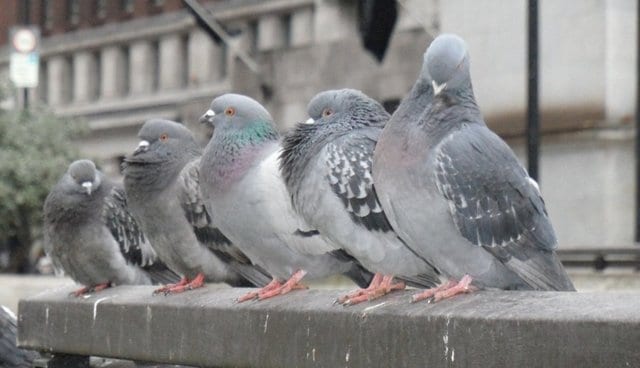
by Pigeon Patrol | Jun 30, 2023 | 4-S Gel Bird repellent, Animal Deterrent Products, Bird Deterrent Products, Bird Law, Bird Netting, Bird Spikes
Pigeons may seem harmless, but these pest birds cause millions of dollars in damage every year to buildings, ventilation systems, machinery, statues, roofs, and much more. Bird droppings and nesting materials left by pigeons pose physical problems and health hazards that can become very serious if not corrected quickly making prompt and effective professional bird control is often essential.
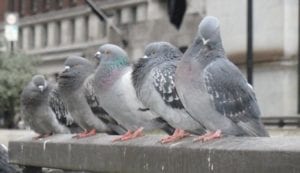
Potential Health Hazards:
There are many health risks associated with pigeons and their droppings. The bacteria, fungi, and ectoparasites that they and their droppings harbor are numerous. The four most common ways disease is passed by bird to human are: inhalation of fecal dust, food and water contaminated with bird feces, direct contact with feces, and parasitic transfer.
Pigeon droppings can expose humans to many diseases, including salmonella, Newcastle disease, candidiasis, encephalitis, orthosis, and toxoplasmosis. In addition, they can also carry cryptococcosis, and coccidiodomycosis, which cause meningitis. The droppings may also harbor growth of fungus, which causes histoplasmosis. Fleas, lice, mites, and other pests often live on these birds, hitching a ride to where ever they want to jump off. Pigeons may also attract other pests, such as rats, which feed on dead pigeons and food that well-intentioned bird lovers may scatter for them.
In addition to disease, bird droppings are known for triggering people to slip and fall, which makes it especially important to rid the birds from highly trafficked areas.
Damage Caused by Pigeons:
These are messy birds, leaving droppings everywhere they go, particularly near their roost sites. Pigeon droppings are not just gross, they are also full of uric acid which makes them extremely corrosive. The droppings are the direct cause of millions of dollars in damage to buildings and other structures. Particularly vulnerable are painted surfaces, awnings, signs, and other similar surfaces. A tragic example of the corrosiveness of pigeon droppings is the Minnesota bridge accident in 2007, which was found to be the direct result of bird droppings eating away at the metal bridge supports until they weakened.
In addition to the damage cause by their acidic droppings, pigeon nests can also cause damage. Pest birds will often build nests in gutters or on roof corners blocking essential drainage systems. Every year several warehouses experience roof damage, and even collapse, when drainage systems have been blocked and standing water rises just six inches. Bird nests can also block ventilation systems, which not only prevents exhaust of potentially harmful gases, but also has the potential to spread diseases. Fire is also a potential hazard. Nesting materials are usually flammable, consisting of twigs, straw, grasses and dried droppings. When pest birds build their nests inside electric signs or other machinery there is a great risk of fire.
Pigeons are creatures of habit and highly social. Once they have found a cozy spot the will return again and again, bringing along more of their pigeon pals. Prolific breeders, pigeons can hatch several broods a year, sometimes even laying a new clutch before the previous have even hatched. Often our buildings and structures have architectural features such as drain spouts and eaves that make perfect nesting spots for these birds. Pigeons are comfortable around humans and they’re hard to scare away or deter. Once a flock of stubborn unwanted pigeons have set up shop in/on your building, it can be stubbornly resistant to removal, often requiring the services of a pest control or animal control professional. As is true of many pests that invade our homes and businesses, the first step to controlling feral pigeons is to remove their food source.
Tips to deter pigeons:
- Don’t feed the pigeons.
- Screen drains and gutters to make your property less attractive to pigeons.
- Encourage children to pick up spilled food – and teach them NOT to feed pigeons
- Keep areas around trash bins and outdoor dining areas clean
- Eliminate water sources such as bird baths, over-watered lawns, or kiddy pools.
Source
Pigeon Patrol Products & Services is the leading manufacturer and distributor or bird deterrent (control) products in Canada. Pigeon Patrol products have solved pest bird problems in industrial, commercial, and residential settings since 2000, by using safe and humane bird
deterrents with only bird and animal friendly solutions. At Pigeon Patrol, we manufacture and offer a variety of bird deterrents, ranging from Ultra-flex Bird Spikes with UV protection, Bird Netting, 4-S Bird Gel and the best Ultrasonic and audible sound devices on the market today.
Voted Best Canadian wholesaler for Bird Deterrent products ten years in a row.
Contact us at 1 877-4-NO-BIRD,(604) 585-9279 or visit our website at www.pigeonpatrol.ca
Pigeon/Pigeon Patrol / Pigeons Roosing / Vancouver Pigeon Control / Bird Spikes / Bird Control / Bird Deterrent / PIgeon Deterrent / Surrey Pigeon Control / Pest / Seagull deterrent / Vancouver Pigeon Blog / Birds Inside Home / Pigeons in the cities / Ice Pigeons / What to do about pigeons / sparrows, Damage by Sparrows, How to Keep Raccoons Away, Why Are Raccoons Considered Pests / De-fence / Pigeon Nesting / Bird Droppings / Pigeon Dropping / woodpecker control / Professional Bird Control Company / Keep The Birds Away / Birds/rats/seagull/pigeon/woodpecker/dove/sparrow/pidgeon control/pidgeon problem/pidgeon control/flying rats/pigeon problems/ bird netting/bird gel/bird spray/bird nails/bird guard
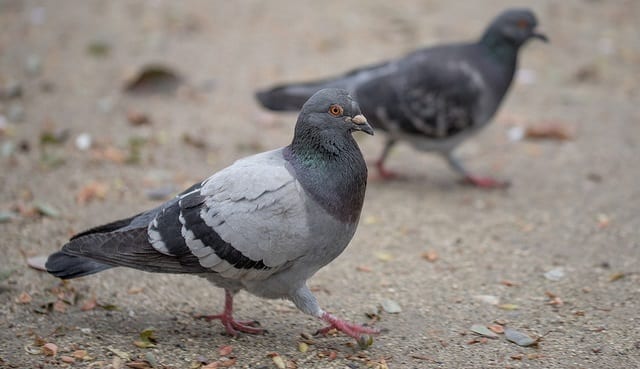
by Pigeon Patrol | Jun 21, 2023 | MBCA, pet bird, Pigeon Control, Pigeon Droppings, Pigeon Patrol's Services, Pigeon Predators
Pigeons are a very common species of bird in India. Pigeons can breed upto 8 times a year, therefore they are found everywhere. The word ‘pigeon’ comes from the Latin word called ‘pipio’, meaning ‘young chirping bird’. These young chirping birds love to create a mess and leave stinky droppings everywhere and anywhere.
Pigeons can sometimes be hard to deal with as they always wander in groups. They can mess your balcony or your vehicle. They can make consistent distracting noises which can give you a headache. They barge in your house and do not know how to leave. Pigeon droppings and nests can stink up a place. They can clog pipes, water-spouts etc. Read on to get rid of pigeons and their belongings.
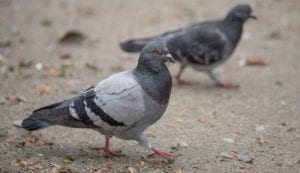
How to get rid of pigeons:
In India, pigeons are protected under Section 428 and 429 of the Indian Penal Code(IPC) (no wonder they are fearless). Even if this was not the case one must always go for non-violent options. So here is a list of the ways in which you can get rid of pigeons and their poop
Sound distraction:
You can hang wind-chimes at places prone to pigeons. They do not like it and as the chime moves and makes sound with the wind it kind of keeps the pigeons away and gives you a pigeon-free and melodious surrounding.
Reflecting surfaces:
Use shiny materials like aluminum foil or mirror to confuse the pigeons and keep them at bay. It plates tricks with their senses and keeps them off the place.
Professional bird nets or covering:
Pigeon nets for balconies are advised but try buying nets with smaller gap holes to avoid any invasions of pigeons.
Pigeon repellents:
You can use organic, home-made pigeon repellents. It can be effective in keeping pigeons away from the balcony or windows. (Providing you with a comparatively clean floor.)
Cover things up:
Pigeons can create a lot of mess out of open trash bins. Keep your trash covered if it is kept in an accessible place for pigeons to avoid any spill and mess.
Pigeons are not pets:
Pigeons are not pets and don’t treat them like one. Discourage people from feeding these nasty, parasite-carrying pigeons to stop them from coming back. Do not make them habitual of a place they can get food from as it will also become a place they use for frequent stinky white droppings.
Introduce fear:
It is said that pigeons are sort of taken aback by owls and snakes. You cannot get a real one but you can get a plastic owl or a rubber snake for your balcony or workspace, keep them in a corner most visited by the pigeons. It is a short-term trick to get rid of the pigeons.
Source
Pigeon Patrol Products & Services is the leading manufacturer and distributor or bird deterrent (control) products in Canada. Pigeon Patrol products have solved pest bird problems in industrial, commercial, and residential settings since 2000, by using safe and humane bird
deterrents with only bird and animal friendly solutions. At Pigeon Patrol, we manufacture and offer a variety of bird deterrents, ranging from Ultra-flex Bird Spikes with UV protection, Bird Netting, 4-S Bird Gel and the best Ultrasonic and audible sound devices on the market today.
Voted Best Canadian wholesaler for Bird Deterrent products ten years in a row.
Contact us at 1 877-4-NO-BIRD,(604) 585-9279 or visit our website at www.pigeonpatrol.ca
Pigeon/Pigeon Patrol / Pigeons Roosing / Vancouver Pigeon Control / Bird Spikes / Bird Control / Bird Deterrent / PIgeon Deterrent / Surrey Pigeon Control / Pest / Seagull deterrent / Vancouver Pigeon Blog / Birds Inside Home / Pigeons in the cities / Ice Pigeons / What to do about pigeons / sparrows, Damage by Sparrows, How to Keep Raccoons Away, Why Are Raccoons Considered Pests / De-fence / Pigeon Nesting / Bird Droppings / Pigeon Dropping / woodpecker control / Professional Bird Control Company / Keep The Birds Away / Birds/rats/seagull/pigeon/woodpecker/dove/sparrow/pidgeon control/pidgeon problem/pidgeon control/flying rats/pigeon problems/ bird netting/bird gel/bird spray/bird nails/bird guard
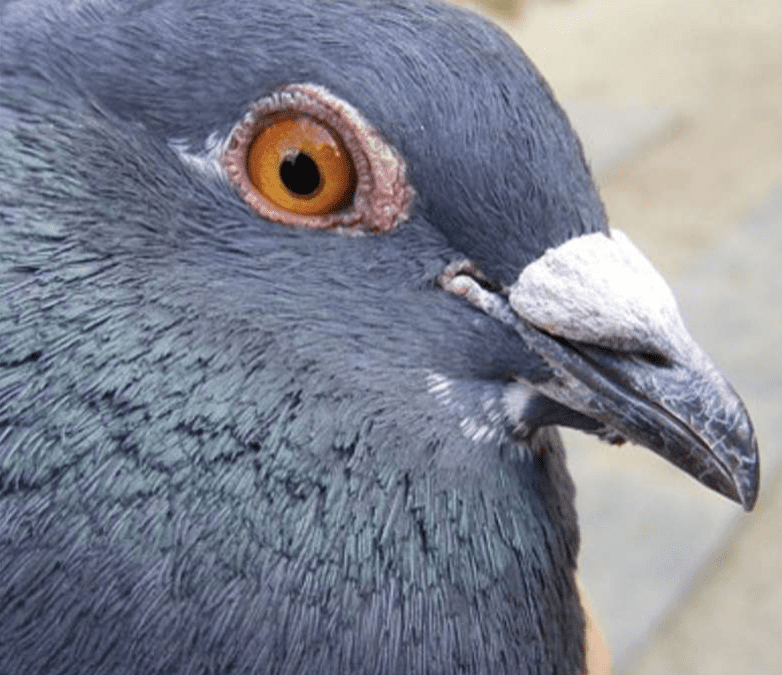
by Pigeon Patrol | Jun 21, 2023 | Bird Spike, Pigeon Predators, Pigeon Spikes, Pigeons, Pigeons in the News, Raccoons, Sparrows
A pigeon takeover can really disrupt your outdoor space. One day you see a few, the next day, a few hundred. Not to mention their droppings can stain or even corrode metal and painted surfaces.
Getting rid of pigeons starts with finding the root cause and planning your defense strategy accordingly. Here’s what could be attracting them and how to humanely get rid of them.
Why Do I Have Pigeons Around My Home?
Especially if you’re not in an urban location, it can be a mystery why pigeons have chosen to flock to your home. Despite their well-known tendency to inhabit cities, pigeons can be found just about anywhere, from large farmlands to small suburban apartments.
These are the main culprits that could be attracting pigeons to your home.
1. There’s a Feast Around
Above all, the pigeon’s main objective is to eat—and their peckish beaks will go for just about anything. They might go for the crops around your home, such as fruits (especially berries), grains, and beans.
If you have a bird feeder, they’ll bully smaller birds away and call upon their pigeon pals to come gorge. There could also be some trash can or compost munchies they’re going after.
Not sure what’s giving them a meal ticket? It helps to observe the pesky birds and note where they gather. Once you pinpoint what they’re pecking at, it will be that much easier to remove the temptation.
2. There’s a Good Perching Spot
Pigeons love a birds-eye view of the surrounding area—what better way to scope out a place to feed or nest? If you’ve got some prime perching real estate around, they’ll be all the more attracted to your property.
Here are a few of their top picks for perching:
- Ledges
- Balconies
- Gutter
- Roof
3. There’s a Suitable Nesting Area
Aside from eating, nesting is a pigeon’s other main objective. They prefer flat, warm, secluded surfaces such as:
- Barns
- Chimneys
- Garages
- Window sills
- Window AC units
- Solar panels
How to Get Rid of Pigeons
Whether it’s the noms or the nesting that has pigeons hooked on your turf, here’s what you can do to keep them away.
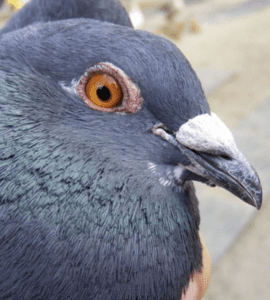
Adjust Your Bird Feeders
Bird feeders are a major attraction to pigeons, but that doesn’t mean you need to bid farewell to all your hungry feathered visitors. By getting feeders pigeons can’t (or don’t want to) access, your favorite songbirds can have their seed and eat it too.
Get a Weight-Sensitive Feeder
Weight-sensitive bird feeders are a great pigeon deterrent (and they’ll also keep ravenous squirrels at bay). These allow lightweight songbirds to munch freely while using weight-sensitive springs to shut feeding ports for pigeons and other heavier visitors.
Use Pigeon-Proof Feeders
Pigeons are large and heavy—and they’re no acrobats. You can deter them by selecting a feeder they can’t use, such as a hanging tube feeder, suet cake, or anything with tiny perches that they won’t be able to sit on.
Put Out Food They Don’t Like
As undiscerning as the pigeon’s appetite is, there are some seeds they tend to stay away from. Here are a few songbird-attracting seeds that pigeons don’t care for:
- Suet
- Nyjer
- Striped sunflower
Avoid the Food They Do Like
In the same vein, you’ll want to avoid the seeds that pigeons find scrumptious, which are often found in less-expensive seed mixes. These include:
Use a Seed Catcher
Those pretty songbirds aren’t the neatest eaters, and pigeons will happily flock to any seed that falls to the ground. If you’re having trouble in this area, consider adding a seed catcher, which is a wide tray that hangs just below the feeder. You can purchase a seed catcher online or attach a tray to your feeder with rope or chains.
Get Anti-Roosting Spikes
Anti-roosting spikes might seem painful at a glance, but they’re more of a visual deterrent than a physical one. Since birds can easily see the spikes, they know they aren’t able to perch and won’t try to do it.
Use a Fearsome Decoy
To keep pigeons away, try putting out a realistic decoy of a predatory animal, such as a snake or an owl. Pigeons tend to wise up to this tactic after a while, so it’s more effective if you move the decoy to different spots periodically. Even still, this is best paired with other solutions and deterrents.
Try a Repellent
Ultrasonic emitters and slippery gel repellents can keep pigeons from hanging out in your yard. However, the downside is that they’ll keep other birds away too. Avoid sticky repellents, as these can trap and injure smaller birds.
Tips for Dealing With Pigeons Around Your Home
While you’re working on giving them the permanent boot, use these tips to manage the pigeons around your home.
1. Don’t Feed the Birds
When pigeons disrupt the feeding of your regular songbird clientele, it’s tempting to throw some bread or cheap seed in a separate location as a diversion. While this presents a temporary solution, you’ll run into trouble when those pigeons tell their buddies about the free food and they all make it a regular place to frequent.
Along with that, be sure to close off or remove other potential food sources, such as trash cans and compost piles.
2. Keep a Consistent Cleanup Routine
While you’re in the midst of a pigeon problem, become well-acquainted with your hose’s power-spray setting. Their corrosive droppings can do serious damage to the surfaces and finishes around your yard, so you’ll want to stay on top of cleanup. Along with that, sweeping and keeping garbage in well-sealed containers can eliminate potential food sources.
3. Deter Pigeons With Reflective Materials
Shiny materials are disorienting and can keep pigeons away from their usual landing spot. Aluminum foil, reflective tape, shiny ribbon, and your old CD collection are all great options.
4. Cap Your Chimney
While it won’t single-handedly prevent a pigeon invasion, investing in a chimney cap is a wise thing to do if you haven’t already. Pigeons have a tendency to nest in chimneys, where they can often get stuck and pass away. That’s not ideal for either of you to go through, so you won’t regret being proactive.
DIY vs. Hire a Pro
Although the risk of pigeon-related illness is low, these birds can harbor disease and parasites. A local bird control service can help you safely deal with them and keep them from coming back. The cost to remove a bird’s nest ranges anywhere from $100 to $2,000.
If you decide to DIY, it’s best practice to wear protective clothing, including eyewear, a mask, and gloves when handling a bird or its droppings.
Additional Questions
How do I get rid of pigeons naturally?
Here are a few scents pigeons can’t stand:
- Cinnamon
- Hot peppers
- Peppermint
- Onion
- Garlic
What are pigeons most afraid of?
Pigeons are most deterred by the sight of predatory birds. These include owls, hawks, and other birds of prey.
Source
Pigeon Patrol Products & Services is the leading manufacturer and distributor or bird deterrent (control) products in Canada. Pigeon Patrol products have solved pest bird problems in industrial, commercial, and residential settings since 2000, by using safe and humane bird
deterrents with only bird and animal friendly solutions. At Pigeon Patrol, we manufacture and offer a variety of bird deterrents, ranging from Ultra-flex Bird Spikes with UV protection, Bird Netting, 4-S Bird Gel and the best Ultrasonic and audible sound devices on the market today.
Voted Best Canadian wholesaler for Bird Deterrent products ten years in a row.
Contact us at 1 877-4-NO-BIRD,(604) 585-9279 or visit our website at www.pigeonpatrol.ca
Pigeon/Pigeon Patrol / Pigeons Roosing / Vancouver Pigeon Control / Bird Spikes / Bird Control / Bird Deterrent / PIgeon Deterrent / Surrey Pigeon Control / Pest / Seagull deterrent / Vancouver Pigeon Blog / Birds Inside Home / Pigeons in the cities / Ice Pigeons / What to do about pigeons / sparrows, Damage by Sparrows, How to Keep Raccoons Away, Why Are Raccoons Considered Pests / De-fence / Pigeon Nesting / Bird Droppings / Pigeon Dropping / woodpecker control / Professional Bird Control Company / Keep The Birds Away / Birds/rats/seagull/pigeon/woodpecker/dove/sparrow/pidgeon control/pidgeon problem/pidgeon control/flying rats/pigeon problems/ bird netting/bird gel/bird spray/bird nails/bird guard
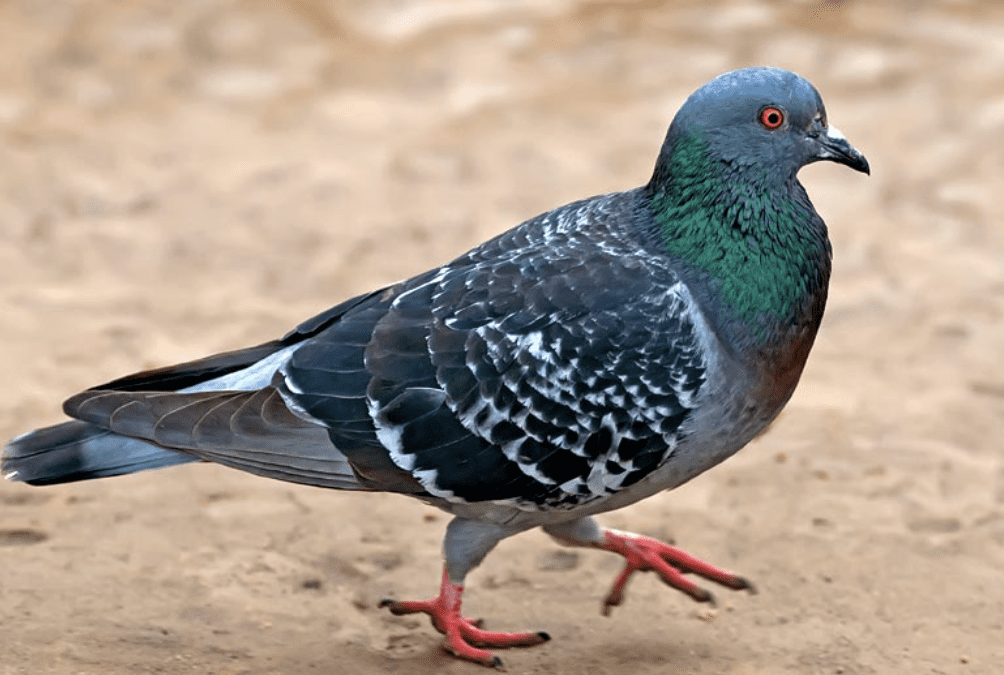
by Pigeon Patrol | Jun 21, 2023 | Bird Spike, Pigeon Droppings, Pigeon Patrol's Services, Pigeon Predators, Pigeon Spikes, Pigeons
Pigeons can carry lice, ticks and disease-bearing mites, and their acidic droppings can damage your car’s paint and anything else it comes in contact with. To make matters worse, once your home becomes their favorite place to perch or nest, it takes some effort to get rid of them.
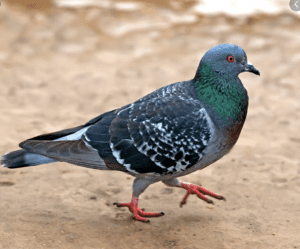
Luckily, you can encourage them to move somewhere else without causing them any harm. Here are 9 ways to get rid of pigeons if you have an infestation.
-
Make noise
An ultrasonic bird repeller discourages pigeons from landing on or near your house by emitting the sounds of their predators and bird distress calls. Because these sounds are ultrasonic, you won’t be able to hear them unless you turn the volume up to the highest setting. But, area pigeons will. While some pigeons will immediately leave your home after hearing the repeller, others will take time to associate your house with the noises and decide to roost elsewhere.
These devices start at about $50 and top out at $200, depending on how far they transmit the sounds (some can cover up to 5,000 square feet) and their features. On the downside, ultrasonic bird repellers don’t just repel pigeons. They can repel other animals, too, and can disturb your dog or cat.
-
Give them no place to roost
A common solution to a pigeon problem, bird spikes are thorn-like protrusions, usually made of plastic, that attach to a strip. When pigeons try to land, the spikes make it impossible to find a place to roost. Most homeowners install them to the roofline, but you can also install them on beams, window sills, ledges, fences and gates. You can purchase these at most home improvement and garden centers for $25 to $40 for a 7’ to 8’ strip.
Bird spikes are one of the most effective ways to get rid of pigeons because they can’t roost where there is no place for them. However, they can detract from your home aesthetically.
-
Be a bad host
Similar to bird spikes, bird wire runs 3” to 4” above the space where you don’t want pigeons to land. As a bird begins its descent, it contacts the wire, which will feel unsteady, and abort his landing. Over time, pigeons will determine your house isn’t a safe place to land and avoid it altogether.
To install bird wire, you’ll need thin, metal posts that attach to your roofline. Unfortunately, it’s not easy to find at home improvement stores or online, so you may have to hire a pest control company to install it for you.
-
Get a gel for that
Unlike bird wire, you can easily install bird repellant gel. This clear, sticky gel comes in a caulk tube that you apply to your roof, fence or wherever they perch. When a pigeon lands on the gel, it will sense its stickiness and leave. Each tube sells for about $15 to $20 and should cover about 10 to 12 feet.
It does have a few downsides. Bird repellant gel needs to be replaced at least annually and, as it collects dust, can become unsightly. On a more positive note, though, it’s virtually invisible and can reduce other pests, such as ants, which can get stuck in it.
-
Hang reflective tape
Another popular way to get rid of pigeons is to hang reflective scare tape, sometimes also called reflective bird tape or flash tape. Sold in rolls of up to 350 feet, this tape has a holographic pattern that interacts with light and disorients birds of all kinds. To use it, cut the tape into strips and hang them wherever you want to discourage the pigeons from landing.
Not only does the shiny “flash” from the tape fluttering in the breeze confuse and scare the pigeon but the sound of it moving upsets them, too. Some people don’t like the look of reflectors, but for less than $15 for 350 feet, it may be worth it.
-
Surprise them with a little sprinkle
Good for all types of pests, including skunks and raccoons, a motion-activated sprinkler scares pigeons away with a combination of sound and water whenever it detects motion. Once activated, it will blast water in the direction where motion was detected for 5 seconds. Most cost between $50 and $75 and can be customized to work only at certain times of the day. After its program, all you have to do is attach it to a hose.
These systems do have a drawback, though, in that they can’t tell the difference between a pigeon, your dog or the neighbor’s kid. If pets or other people routinely walk within the perimeter specified on the water jet’s packaging, you might want to consider using a different method.
-
Get an owl decoy
Pigeons want to avoid their predators just as much as any other bird. Use a frightening decoy to your advantage. Owl decoys work well to deter pigeons. You can find them at most home improvement and garden centers, and they can range from simple decoys with heads that rotate in a breeze to solar-powered ones that emit “hoots” and flap their wings.
Since most weigh very little, you’ll want to secure the base so it doesn’t tip over. And, although decoys are designed to withstand the elements, over time, you may need to clean the sensor on yours or replace the decoy outright. Another possible concern is decoys can deter other birds and smaller animals, like squirrels, from visiting your yard.
-
Lure them with bait
If you don’t have many pigeons to deal with, a pigeon trap may do the trick. Specifically designed for pigeons, these traps can accommodate up to 10 live birds. To use one, place fruit, seeds, cracked corn or other treats inside. When a bird enters through the one-way door to eat, it will close behind him, and he won’t be able to get out. Once you have trapped the birds, you can drive them far from your house and release them.
Traps generally cost between $75 and $100, but those with extra features, like shade covers or water dispensers, will cost more. The good news is they’re effective when you’re contending with a few birds; the bad, they don’t work well for infestations.
-
Be proactive
As creatures of habit, pigeons return to the same place over and over unless you give them a reason not to. While most of the above methods scare them away, you can also remove the things that first attracted them there. Cover all trash cans, pet food and standing water, like birdbaths. Put netting over fruit trees and your garden plants. And don’t overseed your grass or set out other seeds.
It also helps to seal off any gaps in your roof shingles, cap vents and chimneys, and fill any holes where they might nest. These steps will make your home less attractive and may encourage them to find another place with access to berries and places to make a nest.
Extra help
You’ll want to get your pigeon problem under control quickly if you plan to show your house or if you move into a new home with an infestation. In those cases, consider hiring a professional pest control company that will find the right solution for your unique situation.
Source
Pigeon Patrol Products & Services is the leading manufacturer and distributor or bird deterrent (control) products in Canada. Pigeon Patrol products have solved pest bird problems in industrial, commercial, and residential settings since 2000, by using safe and humane bird
deterrents with only bird and animal friendly solutions. At Pigeon Patrol, we manufacture and offer a variety of bird deterrents, ranging from Ultra-flex Bird Spikes with UV protection, Bird Netting, 4-S Bird Gel and the best Ultrasonic and audible sound devices on the market today.
Voted Best Canadian wholesaler for Bird Deterrent products ten years in a row.
Contact us at 1 877-4-NO-BIRD,(604) 585-9279 or visit our website at www.pigeonpatrol.ca
Pigeon/Pigeon Patrol / Pigeons Roosing / Vancouver Pigeon Control / Bird Spikes / Bird Control / Bird Deterrent / PIgeon Deterrent / Surrey Pigeon Control / Pest / Seagull deterrent / Vancouver Pigeon Blog / Birds Inside Home / Pigeons in the cities / Ice Pigeons / What to do about pigeons / sparrows, Damage by Sparrows, How to Keep Raccoons Away, Why Are Raccoons Considered Pests / De-fence / Pigeon Nesting / Bird Droppings / Pigeon Dropping / woodpecker control / Professional Bird Control Company / Keep The Birds Away / Birds/rats/seagull/pigeon/woodpecker/dove/sparrow/pidgeon control/pidgeon problem/pidgeon control/flying rats/pigeon problems/ bird netting/bird gel/bird spray/bird nails/bird guard
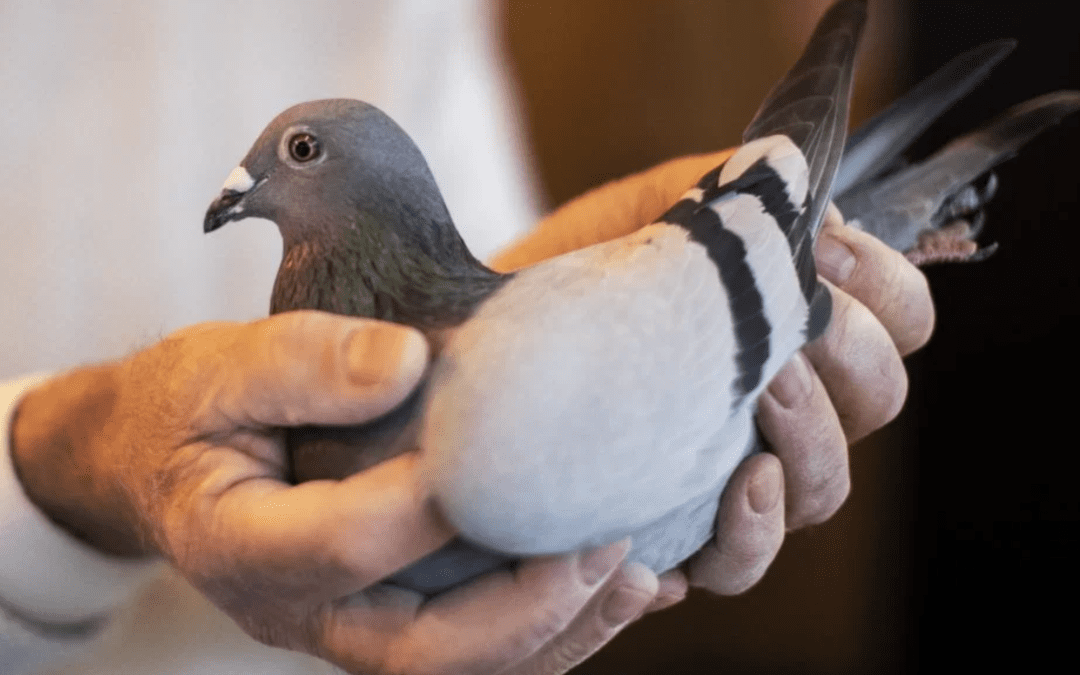
by Pigeon Patrol | Jun 21, 2023 | Bird Spike, Pigeon Predators, Pigeon Spikes, Pigeons, Pigeons in the News, Raccoons, Sparrows, UltraSonic Bird Control
Regardless of whether it’s around your home or a business premises, pigeons can be a nuisance.
While the odd one here or there is, of course, to be expected, if your property has become a popular place for these creatures to hang out, it can cause a number of problems.
• Bird droppings not only look unsightly, when wet they can be a serious slip hazard
• Pigeons do unfortunately deserve their reputation for being unhygienic and they do in fact carry more harmful diseases to humans than rats do
• Pigeon fouling and nest materials attract a whole host of insects including fleas, carpet beetles, flies, clothes moths and mealworm beetles
• Pigeon faeces is highly corrosive and can, therefore, cause extensive damage to your building if it sits there for an extended period of time
• Debris from flocks of pigeons can build up causing blockages to drains and gutters which can cause flooding and roof damage
• Clean-up costs can be high
As you may have gathered by now, it’s advisable to deal with pigeons before they become a huge problem. How exactly do you get rid of pigeons?
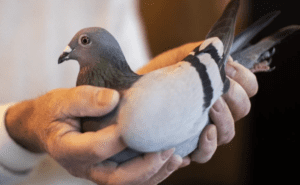
Remove any food sources
Pigeons are scavengers and will feed on nearly anything so make sure there are no possible food sources around your home or business premises. Don’t forget to check your roof and ensure that any outdoor areas are clean, no food scraps have been left out and that rubbish hasn’t been pulled out of your bins by other animals.
Store rubbish bags in metal bins with securely fitted lids so that pigeons can’t gain access to the contents. Try to avoid feeding pets outside or if you have to, clean away their bowl as soon as they’ve finished eating.
Install a decoy
If you look up at buildings you will probably notice some of them have fake Owls, lightweight kites in the form of hawk silhouettes, which are placed as a scare tactic. A good tip is to move the decoy on a regular basis because pigeons will get used to its presence and won’t be scared of t anymore – especially because it doesn’t make a noiseHomemade remedies
Some organic, homemade remedies have been known to be pretty effective. Try placing balls or containers of strong spices around your patio, exterior windowsills or wherever else pigeons tend to gather around your property. The best spices to use are chili powder, cayenne pepper, black pepper or cinnamon.
Don’t make your property pigeon-friendly
If it’s easy for pigeons to settle, they will. Check your property for pigeon-friendly places such as soffits, vents, chimneys, gutters and large gaps. Anywhere up high is naturally going to be an inviting place for these birds to nest and start a family. You can use a fine mesh screen to cover these areas to discourage pigeons from setting up home there.
Call a pest controller
The best thing to do if you’re faced with a pigeon problem is to call a pest controller. Highly experienced in this field, they will be able to provide you with a range of deterrent and proofing solutions which will provide a long-term solution.
Source
Pigeon Patrol Products & Services is the leading manufacturer and distributor or bird deterrent (control) products in Canada. Pigeon Patrol products have solved pest bird problems in industrial, commercial, and residential settings since 2000, by using safe and humane bird
deterrents with only bird and animal friendly solutions. At Pigeon Patrol, we manufacture and offer a variety of bird deterrents, ranging from Ultra-flex Bird Spikes with UV protection, Bird Netting, 4-S Bird Gel and the best Ultrasonic and audible sound devices on the market today.
Voted Best Canadian wholesaler for Bird Deterrent products ten years in a row.
Contact us at 1 877-4-NO-BIRD,(604) 585-9279 or visit our website at www.pigeonpatrol.ca
Pigeon/Pigeon Patrol / Pigeons Roosing / Vancouver Pigeon Control / Bird Spikes / Bird Control / Bird Deterrent / PIgeon Deterrent / Surrey Pigeon Control / Pest / Seagull deterrent / Vancouver Pigeon Blog / Birds Inside Home / Pigeons in the cities / Ice Pigeons / What to do about pigeons / sparrows, Damage by Sparrows, How to Keep Raccoons Away, Why Are Raccoons Considered Pests / De-fence / Pigeon Nesting / Bird Droppings / Pigeon Dropping / woodpecker control / Professional Bird Control Company / Keep The Birds Away / Birds/rats/seagull/pigeon/woodpecker/dove/sparrow/pidgeon control/pidgeon problem/pidgeon control/flying rats/pigeon problems/ bird netting/bird gel/bird spray/bird nails/bird guard
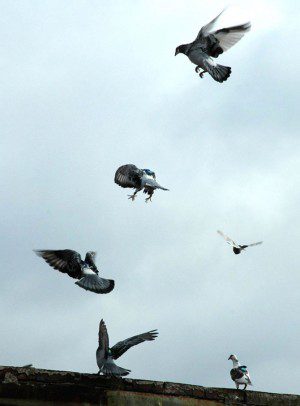
by Pigeon Patrol | Jun 21, 2023 | 4-S Gel Bird repellent, Animal Deterrent Products, Bird Deterrent Products, Bird Law, Bird Netting, Bird Spikes
A component of pigeon droppings has been demonstrated to react with sera of individuals with pigeon breeder’s disease, a form of hypersensitivity pneumonitis, by crossed isoelectric focusing. Similarly, exposed but asymptomatic pigeon breeders do not exhibit antibody to this component, even though they possess significant levels of antibody to other components of pigeon droppings. Purification of this disease-specific component of pigeon dropping was attempted by preparative isoelectric focusing, gel filtration, and affinity chromatography on an immunoadsorbent prepared with asymptomatic antibody. After repeated passage over the affinity column, complete purification could not be achieved. A rabbit antiserum made against the partially purified component revealed the presence of at least one other component that did not react with either symptomatic or asymptomatic sera. Despite these contaminants, the disease-specific component was characterized as a single polypeptide having a molecular weight of approximately 50,000 daltons and having an isoelectric point between 3.5 and 5.1.
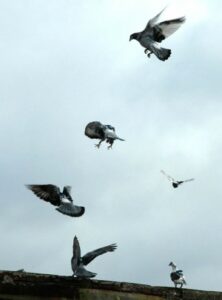
Source
Pigeon Patrol Products & Services is the leading manufacturer and distributor or bird deterrent (control) products in Canada. Pigeon Patrol products have solved pest bird problems in industrial, commercial, and residential settings since 2000, by using safe and humane bird
deterrents with only bird and animal friendly solutions. At Pigeon Patrol, we manufacture and offer a variety of bird deterrents, ranging from Ultra-flex Bird Spikes with UV protection, Bird Netting, 4-S Bird Gel and the best Ultrasonic and audible sound devices on the market today.
Voted Best Canadian wholesaler for Bird Deterrent products ten years in a row.
Contact us at 1 877-4-NO-BIRD,(604) 585-9279 or visit our website at www.pigeonpatrol.ca
Pigeon/Pigeon Patrol / Pigeons Roosing / Vancouver Pigeon Control / Bird Spikes / Bird Control / Bird Deterrent / PIgeon Deterrent / Surrey Pigeon Control / Pest / Seagull deterrent / Vancouver Pigeon Blog / Birds Inside Home / Pigeons in the cities / Ice Pigeons / What to do about pigeons / sparrows, Damage by Sparrows, How to Keep Raccoons Away, Why Are Raccoons Considered Pests / De-fence / Pigeon Nesting / Bird Droppings / Pigeon Dropping / woodpecker control / Professional Bird Control Company / Keep The Birds Away / Birds/rats/seagull/pigeon/woodpecker/dove/sparrow/pidgeon control/pidgeon problem/pidgeon control/flying rats/pigeon problems/ bird netting/bird gel/bird spray/bird nails/bird guard
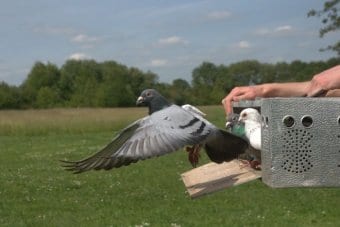
by Pigeon Patrol | Jun 14, 2023 | Bird Spike, Pigeon Predators, Pigeon Spikes, Pigeons, Pigeons in the News, Raccoons, Sparrows, UltraSonic Bird Control
A study on a population of pigeons on the University of South Africa’s Muckleneuk campus was conducted over 2 years. Counts were conducted during a baseline year (March 2013–February 2014) to establish the pigeon population index inhabiting the campus buildings, and again in the management year (August 2014–August 2015) once Eagle Eyes™, Fire (Flash) Flags, bird spikes and a combination thereof were implemented on the buildings. An efficacy reduction percentage was determined for each of the control structures. The total pigeon index on the campus declined by 50 % once the control structures were implemented. Control structures; however, differed markedly in efficacy from each other. Whilst bird spikes indicated the highest efficacy at reducing the pigeon population index, seasonality also influenced the efficacy of the control structure. Quantified understanding of the efficacy of pigeon control measures allows urban management to make informed decisions about reducing pigeon populations.
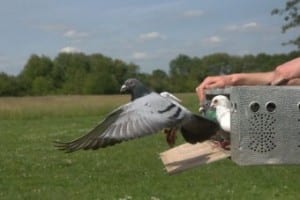
Source
Pigeon Patrol Products & Services is the leading manufacturer and distributor or bird deterrent (control) products in Canada. Pigeon Patrol products have solved pest bird problems in industrial, commercial, and residential settings since 2000, by using safe and humane bird
deterrents with only bird and animal friendly solutions. At Pigeon Patrol, we manufacture and offer a variety of bird deterrents, ranging from Ultra-flex Bird Spikes with UV protection, Bird Netting, 4-S Bird Gel and the best Ultrasonic and audible sound devices on the market today.
Voted Best Canadian wholesaler for Bird Deterrent products ten years in a row.
Contact us at 1 877-4-NO-BIRD,(604) 585-9279 or visit our website at www.pigeonpatrol.ca
Pigeon/Pigeon Patrol / Pigeons Roosing / Vancouver Pigeon Control / Bird Spikes / Bird Control / Bird Deterrent / PIgeon Deterrent / Surrey Pigeon Control / Pest / Seagull deterrent / Vancouver Pigeon Blog / Birds Inside Home / Pigeons in the cities / Ice Pigeons / What to do about pigeons / sparrows, Damage by Sparrows, How to Keep Raccoons Away, Why Are Raccoons Considered Pests / De-fence / Pigeon Nesting / Bird Droppings / Pigeon Dropping / woodpecker control / Professional Bird Control Company / Keep The Birds Away / Birds/rats/seagull/pigeon/woodpecker/dove/sparrow/pidgeon control/pidgeon problem/pidgeon control/flying rats/pigeon problems/ bird netting/bird gel/bird spray/bird nails/bird guard
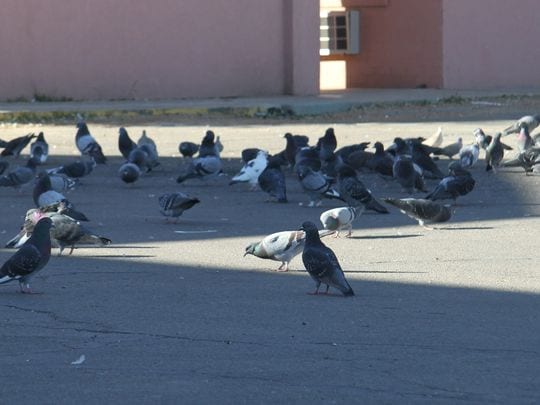
by Pigeon Patrol | Jun 14, 2023 | Bird Spike, Pigeon Predators, Pigeon Spikes, Pigeons, Pigeons in the News, Raccoons, Sparrows, UltraSonic Bird Control
Being a peregrine fanatic I’m kind of fond of pigeons – at least from the prey point of view – so when I was in downtown Pittsburgh on Sunday I stopped by Mellon Square to check out the scene.
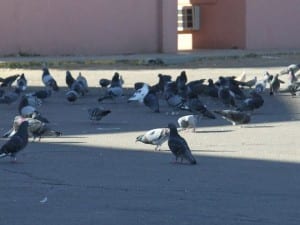
Even for a peregrine falcon the number of pigeons at Mellon Square is way too much of a good thing. I counted more than 150 and I couldn’t see all of them. The pigeons outnumbered people more than 30 to 1.
This explains why peregrines hang out on the Oliver Building window sills. It’s like visiting an all-you-can-eat restaurant. The food may not be that great but there’s so much of it!
This kind of pigeon over-population repulses most people and they want a quick fix, the quickest being poison. But if you poison a pigeon, you’ll poison a peregrine. After a culling episode pigeons reproduce fast to fill the void – in fact lethal control actually increases the flock – but the peregrines take years to recover. And peregrines are endangered in Pennsylvania. It’s bad, bad, bad to poison an endangered species.
So what to do?
Pigeons need two things to reach the numbers found at Mellon Square: lots of food and places to nest. They reproduce in direct proportion to their food supply. If food is scarce some won’t nest at all. If food is plentiful they lay the next clutch of eggs before the first set has hatched, producing more than 12 chicks per year.
The food problem is obvious. Sidewalks at Mellon Square are coated with bird seed. Control the food source (the people who feed them) and you’ve got most of the problem licked. To make a really dramatic difference, control the nest sites as well.
City pigeons nest on buildings and bridges. They also nest in buildings. Find the buildings involved and spend the time and money to block the access holes. Last summer the University of Pittsburgh cleaned the Cathedral of Learning and blocked off the pigeon nest holes as part of the cleaning job. One year later there are far fewer pigeons at Schenley Plaza.
And finally, there’s a foolproof solution that makes both the pigeon-feeders and the pigeon-haters happy. Many European cities have solved their pigeon problem permanently by building dovecotes and pigeon lofts. Yes, they built nest sites. They control the population at the dovecotes by substituting dummy eggs and they control the food level by giving pigeon lovers an approved place to feed and interact with the birds.
This keeps the pigeons and the birdseed off the street. An elegant solution.
Source
Pigeon Patrol Products & Services is the leading manufacturer and distributor or bird deterrent (control) products in Canada. Pigeon Patrol products have solved pest bird problems in industrial, commercial, and residential settings since 2000, by using safe and humane bird
deterrents with only bird and animal friendly solutions. At Pigeon Patrol, we manufacture and offer a variety of bird deterrents, ranging from Ultra-flex Bird Spikes with UV protection, Bird Netting, 4-S Bird Gel and the best Ultrasonic and audible sound devices on the market today.
Voted Best Canadian wholesaler for Bird Deterrent products ten years in a row.
Contact us at 1 877-4-NO-BIRD,(604) 585-9279 or visit our website at www.pigeonpatrol.ca
Pigeon/Pigeon Patrol / Pigeons Roosing / Vancouver Pigeon Control / Bird Spikes / Bird Control / Bird Deterrent / PIgeon Deterrent / Surrey Pigeon Control / Pest / Seagull deterrent / Vancouver Pigeon Blog / Birds Inside Home / Pigeons in the cities / Ice Pigeons / What to do about pigeons / sparrows, Damage by Sparrows, How to Keep Raccoons Away, Why Are Raccoons Considered Pests / De-fence / Pigeon Nesting / Bird Droppings / Pigeon Dropping / woodpecker control / Professional Bird Control Company / Keep The Birds Away / Birds/rats/seagull/pigeon/woodpecker/dove/sparrow/pidgeon control/pidgeon problem/pidgeon control/flying rats/pigeon problems/ bird netting/bird gel/bird spray/bird nails/bird guard
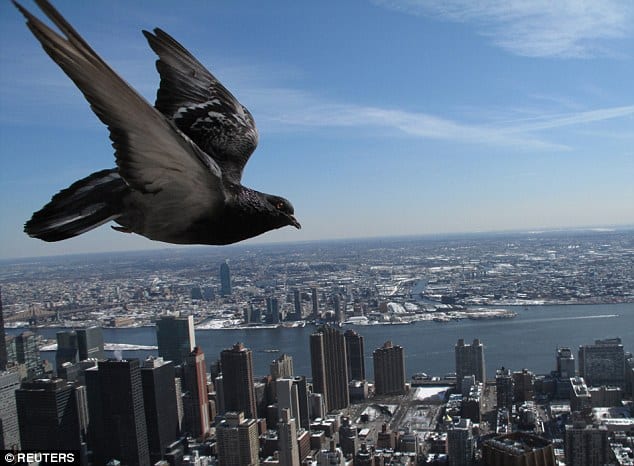
by Pigeon Patrol | Jun 14, 2023 | Bird Spike, Pigeon Droppings, Pigeon Patrol's Services, Pigeon Predators, Pigeon Spikes, Pigeons, Pigeons in the News
Rats with wings, or majestic streetwise bird? It’s a debate that’s raged almost as long as New York City has been called that. And this week, the war between the two sides boiled over again.
It started when the exclusive University Club had its feathers ruffled. It wanted to drape its storied building in netting, to protect it from pigeon poo, which eats away at stone and metal. But the Landmarks Commission said it would have to wait for approval, as it would be a “visible change” to the landmarked Italian Renaissance building’s façade. As if the crap wasn’t a “visible change” enough.
Meanwhile, over on East 93rd Street, there was a scuffle involving longtime pigeon activist Anna Dove and her neighbor, who snatched away her bag of seed after he saw her feeding the pigeons on the sidewalk. The police were summoned.
“It’s disgusting,” said her nemesis, retired teacher Arthur Schwartz. “She’s feeding the rats.”
And with the live pigeon-shooting state championships in Pennsylvania coming up, it’s almost guaranteed that there will be an increase in demand of pigeon-poaching — New York City is a favorite spot for trapping them and transporting them to be used as live targets. The animal-rights activists will be out with their cameras and signs to stop them.
No matter which side you’re on, one things for certain — by the end, things are going to get a little birdbrained.
*
“It’s not the pigeons that are the problem, it’s the number of them,” says Andrew D. Blechman, author of “Pigeons: The Fascinating Saga of the World’s Most Revered and Reviled Bird.” “They’re gentle creatures. The problem is that they get in our face, just like we get in each other’s faces.”
No one one’s quite sure of how many pigeons are in New York City. One adage is “one pigeon per person,” which would put their numbers at about 7 million. They each produce about 25 pounds of waste per year.
Pigeons love cities because of the many ledges, windowsills, eaves and rooftops available for them to roost in, which mimics their natural habitat of high cliffs. Pigeon pairings are monogamous, often mating for life, and both parents raise the babies — called squab — for a time, sitting on the eggs in shifts.
The pigeon includes about 298 species of bird, but the Rock Dove is the most common to the New York area, according to the Parks Department. The grey, bobbing-headed birds usually have purple-green iridescence around the neck area. They’re the scruffiest members of the dove family — although “dove” usually connotes the pure white symbols of peace, not the pizza scavengers of city streets. (Just say they’ve been pigeonholed.)
“If they were white,” Blechman says, “people would love them.”
Blame the French for our pigeon problems. The little pluckers first arrived in the early 1600s with French settlers who used them for meat. They were easy to raise — they could be kept in a barn, where they’d perch on the rafters, and young pigeons served as a good source of protein.
But they soon escaped their confines and went feral.
City life agreed with them and allowed them to flourish — and in some cases, over-flourish. Their natural predators, like falcons and hawks, aren’t found here in great numbers.
Courtney Humphries, author of “Superdove: How the Pigeon Took Manhattan . . . And the World,” concedes that pigeon are pilloried partly because of their “persistence. They nest on the buildings we consider our territory, and they don’t like to be moved.”
The average city pigeon has a lifespan of three to five years. With all the food scattered throughout the garbage cans and sidewalks — plus well-meaning human feeders — they spend less time looking for grub, which leaves more time for mating.
“The biggest problem is the people who overfeed them,” says Blechman. “Every city has about a dozen of them, and they’re the ones who cause the [overpopulation] problem.”
He suggests that if you want to feed the birds, hand out just a teaspoon full of birdseed for a flock. “It’s just enough to give them a little extra energy while they’re out trying to find their own food.”
“If nobody fed pigeons, I think things would look a lot different,” agrees Humphries, who says that human feeders end up creating dense flocks. “A lot of the problem with pigeons comes from people.”
If you can’t freeze the hearts of little old ladies, though, you could try eating them (the pigeons, that is). Squab — baby pigeons that haven’t flown yet — is on the menu at many restaurants around the city, particularly French. They’re “basically the milk-fed veal of the sky,” says Blechman — tender, mostly dark meat, and one of the only poultry that can be eaten rare. (Pigeons produce their own milk-like substance, which they feed to their young by regurgitation.)
Pigeon pot pie was a huge colonial favorite. Today, try the Squab and Foie Croustillant at the Modern, Danny Meyer’s restaurant at the Museum of Modern Art.
*
Unless the appetite for squab skyrockets, New York’s options are few. Avicide — poisoning birds — was made illegal in 2000, when the state Legislature passed a bill outlawing the use of “flock dispersal agents” like Avitrol in cities with more than 1 million people.
Before that, property managers regularly hired pest control services to dole out Avatrol to flocks of pigeons.
“In theory, you would mix it with feed, and when one pigeon ate some of the treated food, they would begin to suffer from neurological toxicity,” explained Stephanie Boyles, wildlife expert at the Humane Society of the United States. “When their flockmates saw them suffering, it would prompt them to leave the area.”
In practice, however, overdosing often led to large numbers of birds convulsing and writhing in pain on the street before their deaths. Welcome to New York!
The last major flare-up between pigeons and people was in 2007, when City Councilman Simcha Felder released a report plaintively titled, “Curbing the Pigeon Conundrum.”
Claiming that their droppings carried a host of diseases like histoplasmosis, he proposed a $1,000 fine to anyone feeding them, as well as curbing their numbers through birth control (a measure that cities like Los Angeles have adopted, although some argue that it’s unsustainable), and appointing a city “Pigeon Czar” to oversee other pigeon-control issues.
The NYC Department of of Health and Mental Hygiene maintains that contact with their droppings only poses a small health risk, and that “routine cleaning of droppings (e.g. from windowsills) does not pose a serious health risk to most people,” although disposable gloves are a good idea.
The Humane Society came out against the anti-feeding fine because they weren’t sure it would actually make a difference in reducing flocks, said Boyles. “We still suggest working with communities to create places where pigeons are welcome, and discouraging them where they’re not.”
While Felder’s bill didn’t fly, it was only one of many efforts to keep pigeons clipped.
In 2006, pigeon loitering was so dense near the Army Recruitment Center in Times Square, speakers were set up to broadcast sounds of falcons and pigeons being attacked, in hopes of scaring them away. In 2003, they had so overwhelmed Bryant Park that the operators invited a falconer and his hawk to the park for a week to scare away (not eat) the pigeons.
In 2007, the MTA installed Bird-B-Gone on some of its elevated stations along the 7 line, as well as others. The electronic system zapped birds that got too close.
In the ’80s, plastic owls were a big seller. Today, a slightly more high-tech version, called the RoboHawk, moves its head, wings, and makes what its creators hope are pigeon-threatening sounds.
Every so often, a politician considers reviving an overall anti-feeding bill, since, for now, it’s only illegal in city parks where signs are posted (the fine is usually $50).
Some cling to the hope that the city will come to its senses and declare war. Because they’re a non-native species, pigeons are not protected by either the Federal Migratory Birds Act or New York state laws. Can anyone say hunting season?
It’s got to be done mafia-style, though. Culling is only a temporary solution — as with most wild birds, quick breeding will put their numbers back to pre-cull figures within weeks, according to Pigeon Control Advisory Service.
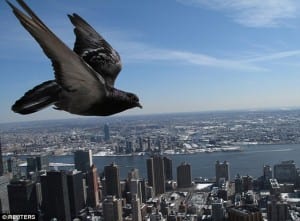
But spare a thought, pigeon haters, for your majestic foe. Pigeons have more qualities than you think.
Although city birds aren’t particularly active, pigeons are built to be athletes — a trained bird can fly up to 60 miles per hour, and they can stay in the air for 500 miles. They’re meant for flying long distances, and have “homing” instincts, which means they will naturally find their way back.
This talent is why they were literally drafted into the United States Army Pigeon Service.
A million served in both world wars, where they delivered messages across enemy lines and saved thousands of soldiers’ lives. One pigeon, Cher Ami, won a French medal for his bravery for flying through gunfire, finally delivering the message dangling from what was left of his foot. He’s now stuffed and in the Smithsonian.
The army’s Pigeon Breeding and Training Center was based at Fort Monmouth, NJ, and opened in 1917. Many of its “Pigeoneers” were “basically just boys out of Brooklyn, and they’d just bring their best birds,” Humphries says. (The training center was closed in 1957 when the Army stopped using them as messengers.)
Keeping pigeons on rooftops — and racing them — used to be much more popular. Who can forget Marlon Brando’s character in the 1954 film “On the Waterfront” shouting up to his friend Joey, “I got one of your birds!” right before Joey “accidentally” falls off the roof?
The city is full of equally vocal bird-lovers.
“They animate our lives,” argues Blechman, who says that despite writing a book on pigeons, he is not a “bird person,” and admits to having eaten them before. He’s come around, though. “You look out the window and you can have a pigeon land on your windowsill, and the same one will come back every day, and at the same time.
“What would the lonely, the unemployed, and the elderly do every day if it weren’t for pigeons?”
The Internet is atwitter with kooky pigeon fans. There’s a pigeon appreciation society on Facebook. On photo-sharing site Flickr, there’s a group called The Global Pigeon Art Appreciation Society.
“You are not alone,” the site reads. “Many artists have been inspired by pigeons.”
There is also a city listserv called “New York Pigeon People,” where members discuss how to rescue birds and share pigeon news.
You can eat them, race them, breed them, feed them, but you can’t escape them, whether you consider them the most misunderstood creatures of the flying community or the world’s worst bird. As Blechman put it, “We’re just going to have to learn to co-exist.”
Source
Pigeon Patrol Products & Services is the leading manufacturer and distributor or bird deterrent (control) products in Canada. Pigeon Patrol products have solved pest bird problems in industrial, commercial, and residential settings since 2000, by using safe and humane bird
deterrents with only bird and animal friendly solutions. At Pigeon Patrol, we manufacture and offer a variety of bird deterrents, ranging from Ultra-flex Bird Spikes with UV protection, Bird Netting, 4-S Bird Gel and the best Ultrasonic and audible sound devices on the market today.
Voted Best Canadian wholesaler for Bird Deterrent products ten years in a row.
Contact us at 1 877-4-NO-BIRD,(604) 585-9279 or visit our website at www.pigeonpatrol.ca
Pigeon/Pigeon Patrol / Pigeons Roosing / Vancouver Pigeon Control / Bird Spikes / Bird Control / Bird Deterrent / PIgeon Deterrent / Surrey Pigeon Control / Pest / Seagull deterrent / Vancouver Pigeon Blog / Birds Inside Home / Pigeons in the cities / Ice Pigeons / What to do about pigeons / sparrows, Damage by Sparrows, How to Keep Raccoons Away, Why Are Raccoons Considered Pests / De-fence / Pigeon Nesting / Bird Droppings / Pigeon Dropping / woodpecker control / Professional Bird Control Company / Keep The Birds Away / Birds/rats/seagull/pigeon/woodpecker/dove/sparrow/pidgeon control/pidgeon problem/pidgeon control/flying rats/pigeon problems/ bird netting/bird gel/bird spray/bird nails/bird guard
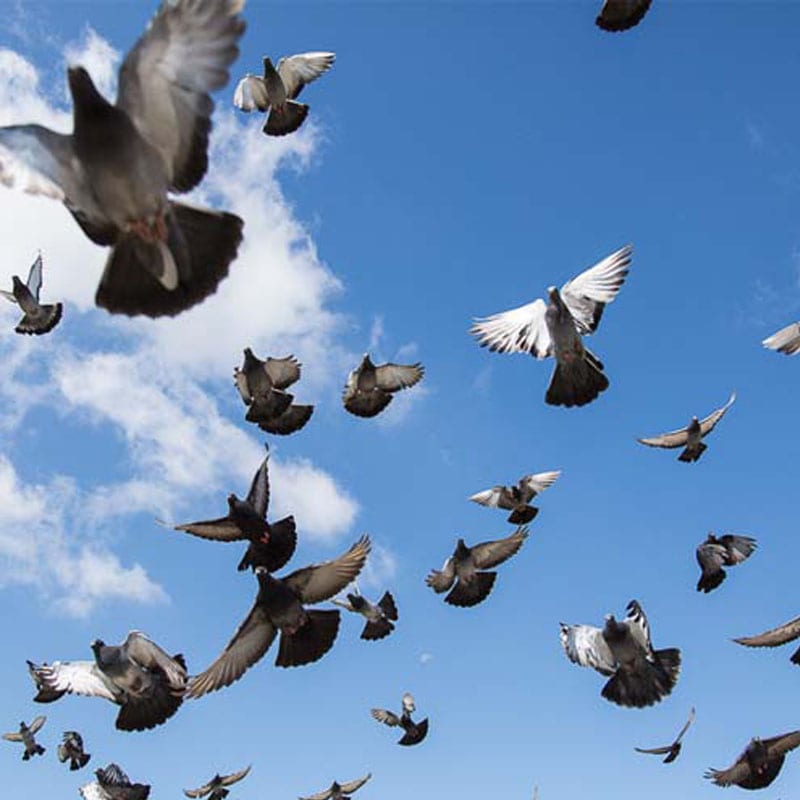
by Pigeon Patrol | Jun 14, 2023 | Bird Spike, Pigeon Droppings, Pigeon Patrol's Services, Pigeon Predators, Pigeon Spikes, Pigeons, Pigeons in the News
While pigeons are well known for living in cities, they’ll find their habitats anywhere. And whether you have an outdoor space that’s acres large or just a tiny balcony, you’ll likely receive visits from pigeons from time to time. A few pigeon coos or some droppings on your driveway may not be a huge concern. But if those harmless visits are turning into a constant nuisance, like excessive noise or cars coated in droppings, and you need to know how to deter pigeons, the steps below provide plenty of solutions to this problem.
So how do you get rid of pigeons? Start by eliminating any access to food sources, then follow up with deterrents that prevent them from landing or nesting near your home. It sounds simple, but if the problem of how to get rid of pigeons becomes too overwhelming, it may be best to call in the help of a professional from one of the best pest control companies that also offer wildlife control.
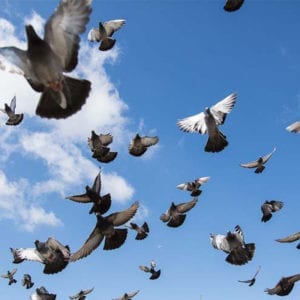
Before You Begin…
When wondering how to keep pigeons off your roof or how to keep pigeons off a balcony, it’s important to note that although they may seem harmless, pigeons can pose more of a problem than you may initially think. Pigeons are communal creatures, and large gatherings can cause excessive noise. Pigeon droppings are relatively acidic, and they can eat away at roofing materials and car paint if not removed. Plus, pigeon droppings can obscure a home’s solar panels, meaning that the solar panels can’t work as efficiently.
Droppings can also spread disease, and exposure to the birds could cause illness, especially in those who are immunocompromised. Pigeons themselves can carry a variety of parasites, such as ticks. If you have a significant pigeon problem, it may be worth contacting a professional who can use the proper tools and techniques to keep the birds away. It may even help to call an expert for advice before you invest time and money into various DIY methods—what may seem like a minor issue to you could be a larger-scale problem that definitely requires a pro’s help. Talking to a professional first can help you determine the full scope of the pigeon problem and what exactly will be needed to fix it.
Tips for Getting Rid of Pigeons
- Remove or secure any potential food sources, such as trash cans or compost receptacles.
- Apply bird spikes, netting, and reflective tape or shock strips, and set up a faux owl or hawk figure near the spot they frequent most.
Safety Considerations
- If the pigeons leave a significant number of droppings around the home, exposure could cause illness.
- Before attempting to trap or remove a pigeon from the inside of the home, it’s wise to contact an exterminator or animal control specialist first.
Source
Pigeon Patrol Products & Services is the leading manufacturer and distributor or bird deterrent (control) products in Canada. Pigeon Patrol products have solved pest bird problems in industrial, commercial, and residential settings since 2000, by using safe and humane bird
deterrents with only bird and animal friendly solutions. At Pigeon Patrol, we manufacture and offer a variety of bird deterrents, ranging from Ultra-flex Bird Spikes with UV protection, Bird Netting, 4-S Bird Gel and the best Ultrasonic and audible sound devices on the market today.
Voted Best Canadian wholesaler for Bird Deterrent products ten years in a row.
Contact us at 1 877-4-NO-BIRD,(604) 585-9279 or visit our website at www.pigeonpatrol.ca
Pigeon/Pigeon Patrol / Pigeons Roosing / Vancouver Pigeon Control / Bird Spikes / Bird Control / Bird Deterrent / PIgeon Deterrent / Surrey Pigeon Control / Pest / Seagull deterrent / Vancouver Pigeon Blog / Birds Inside Home / Pigeons in the cities / Ice Pigeons / What to do about pigeons / sparrows, Damage by Sparrows, How to Keep Raccoons Away, Why Are Raccoons Considered Pests / De-fence / Pigeon Nesting / Bird Droppings / Pigeon Dropping / woodpecker control / Professional Bird Control Company / Keep The Birds Away / Birds/rats/seagull/pigeon/woodpecker/dove/sparrow/pidgeon control/pidgeon problem/pidgeon control/flying rats/pigeon problems/ bird netting/bird gel/bird spray/bird nails/bird guard

by Pigeon Patrol | Jun 14, 2023 | Bird Spike, Pigeon Droppings, Pigeon Patrol's Services, Pigeon Predators, Pigeon Spikes, Pigeons, Pigeons in the News
At this time of year (February and March) many lofts will be experiencing respiratory infection in some of their young birds. This usually presents as a few birds with one eye becoming red and watery.
Respiratory diseases are common in pigeons. They are a major cause of poor performance and pigeon loss during the race season. Young birds under stress are most at risk of developing respiratory diseases, although healthy old birds can fall ill when exposed to respiratory diseases in the race basket. For birds to give of their best it is vital that fanciers have an understanding of respiratory infection and how to correctly manage it.

Nature of the disease
Clinical respiratory infection in pigeons is the end result of the interplay of a number of factors, but the type of infective organisms involved and the vulnerability of the birds to infection are particularly important.
The usual organisms involved are Mycoplasma, Chlamydia and a range of bacteria (most commonly, E. coli). Whether or not these organisms actually cause disease in a pigeon, if it is exposed, essentially depends on how well the pigeon is at the time of exposure and also its age and level of immunity. Any factors that cause physiological stress can weaken the bird and make it more vulnerable to developing a respiratory infection. As a general rule, younger pigeons are more susceptible. However, in a bird that is otherwise healthy exposure to the agents that cause respiratory infection does not necessarily make it sick. Exposure to these organisms as the young pigeons grow and develop, rather than cause disease, stimulates immunity to form in a bird that is otherwise healthy.
Predisposing stress factors that can make pigeons more vulnerable to respiratory infection can take the form of:
1. Environmental triggers; e.g. dampness, overcrowding, low hygiene
2. Management triggers; e.g. poor feeding, excessive tossing, or
3. Concurrent disease, in particular parasitism. This includes wet canker. The combination of either worms or elevated trichomonad levels and respiratory disease is very common.
The fancier must establish a healthy loft environment; otherwise respiratory disease will continually recur, despite medication. A good example here is a fancier who was recently in our clinic. He had a group of young birds that had dropped about three flights; that is, were about ten weeks old. A few kept getting ‘eye colds’. He would treat them and they would become well but within two weeks there would be more birds with the same problem. In a 2m x 2m section, he had 40 youngsters, and the humidity reading (from a hygrometer placed on the wall of the loft overnight) was 85%. Reducing the number of birds to 25 per section, and installing an additional vent high on the back wall improved ventilation and reduced humidity. The birds were again treated, but this time the problem did not return.
This article discusses respiratory infection associated with Chlamydia.
Chlamydia
Chlamydia are one of the 2 common organisms that cause respiratory infections in pigeons. Chlamydia are an unusual group of organisms. They are what are called intracellular bacteria , ie they actually live inside the tissues of animals. Being bacteria they are antibiotic responsive. As a group, they can cause disease in a variety of animals. One species causes disease in koalas while another causes a venereal disease in humans. The species that infects pigeons is called Chlamydia psittaci. It essentially has two lifecycle stages – a reticulate body and an elementary body. The elementary body can survive in the environment. Pigeons become infected through contact with the elementary body. The elementary body typically attaches itself to the superficial lining cells of the eyelid, throat or upper respiratory tract. The elementary body then penetrates the cell membrane into the cell and becomes a reticulate body. The reticulate body then replicates itself until there are many reticulate bodies in the cell. As the reticulate bodies increase in number, they rupture into adjacent cells causing cell destruction and an advancing wall of inflammation. Alternatively, they rupture back out on to the surface of the cell, once again becoming elementary bodies and further contaminating the environment. Infected birds with active disease shed large numbers of these infective elementary bodies in their saliva, tears, respiratory discharges and droppings contaminating the loft. Poor loft hygiene enables a build-up of the organism in the loft. Combine this with birds that are a bit run-down and a disease outbreak occurs. However in well managed lofts disease is rare. In fact ,as mentioned above, it is thought that low grade exposure to these Chlamydia elementary bodies may not cause disease but, rather, trigger the development of an immune response in a pigeon that enables it to be more resistant to the disease. The typical situation in most racing lofts is that Chlamydia tends to cycle through the birds. Growing youngsters are passively exposed to the organism from other birds in the loft and their parents. Often this doesn’t cause disease. Most birds, by the time they are six months old, have had multiple low grade exposures and have developed a significant immunity. Disease occurs if the youngsters become ‘run down’ due to stress factors and are therefore unable to mount an immune response or, alternatively, their level of immunity is challenged by a particularly high exposure to the organism. An antibiotic called doxycycline is very effective at treating Chlamydia. If a pigeon is given a 45-day course it has a 98% chance of clearing Chlamydia totally from its system. One would think that it would make sense to treat all the birds for 45 days, eradicating the disease and then not worry about it in the future. The difficulty with this is that if we were to eradicate Chlamydia, it is known that any immunity that the pigeons have would gradually disappear. This would mean that if the birds were subsequently re-exposed, they would be a very vulnerable population and potentially severe disease could occur. Once racing starts, exposure to Chlamydia in the race units is virtually guaranteed. Although drugs can be used to treat Chlamydia again and again if it keeps reappearing in returning race birds this is obviously not desirable. The factor that principally protects the birds in the race unit is the immunity that they are able to form if they are well cared for in the loft while young and maturing . Chlamydia is therefore managed by caring for the birds well ( so that they can mount a good immune response), by allowing a controlled exposure to the disease ( to build up a strong immunity) through the maintenance of loft hygiene and by using medication if required during development in a way that keeps the birds healthy but still allows some exposure to the disease. How is this done?
Post-weaning management
In the post-weaning time Chlamydia cycles through the developing young birds. Some youngsters may have passive immunity acquired through the egg and from their parents in the crop milk. Further exposure in the young bird loft builds on this immunity. Some youngsters take longer to form a protective immunity than others, and these can show symptoms of clinical Chlamydia infection. If the birds are well otherwise, these symptoms are often described as a “one eye cold”. Symptoms are often mild and may include a dirty cere, sneezing, nasal discharge, a partially closed light sensitive eye, inflamed red eyelids, and also tears overflowing the eyelids and becoming air dried on the feathers around the eye. If the number of birds affected is low and the symptoms are mild, often no treatment is provided. With ongoing good care it is likely that the birds will fix themselves and will develop a stronger natural immunity this way. If the symptoms in an individual bird become more severe, particularly if the bird’s development is starting to be compromised, treatment should be provided. The usual treatment is doxycycline 10–25mg per pigeon once daily. If less than 5–10% of birds are affected, it is best to just treat these birds individually. There is no need to separate them from the rest as all birds are likely to have the organism in them. Also young birds tend to recover better if left with the flock in a familiar loft. If more than 10% of birds develop symptoms then a flock treatment should be given. The usual treatment is doxycycline in the water. However, if 10% or more are developing symptoms, this tells you that this group of young pigeons is having trouble developing their natural immunity. And if they are having trouble developing a natural immunity this means that something is stressing them. A review of their management, loft environment and a check for any other (particularly Circo virus and parasitic) disease should be done. In young birds the underlying stress is often overcrowding. In Victoria, Australia, January to May are the respiratory months. Most lofts contain large numbers of young birds having just had the stress of weaning and now having the stress of moulting, coupled with young bird training and establishing themselves in the loft. It is a time of high humidity and fluctuating temperature, conditions that favour respiratory disease. Between 1 December and 1 March (the usual time that the last youngsters are weaned in many lofts in Australia), fanciers must monitor the youngsters, in particular for signs of “one-eye cold”, dirty wattles or sneezing. However, green watery droppings, failure to thrive, shortness of breath and a reluctance to fly may also be indicative of the problem. After 1 March in Australia, as the youngsters get older, fanciers look for signs of poor loft flying, excessive panting after training, and sneezing within the loft. Even in the healthiest lofts, there can be occasional outbreaks of respiratory diseases. It is important to recognise that more than three sneezes within five minutes from 100 birds is a significant indicator of early respiratory disease. One would expect two to three sneezing outbreaks between January and May, even in the best managed loft.
Pre-race management
As racing approaches, the birds have been given as long as possible to develop their natural immunity. It is important, however, that there is no active Chlamydial respiratory infection in the birds when racing starts. The can lead to poor race results and potentially disastrous returns. Chlamydia tests can be done by your veterinarian to see if the disease is still active and if the birds have formed a good immunity. The usual tests available are the Chlamydia immunocomb test, or Chlamydia PCR test.
A team should only be treated for Chlamydial respiratory infection before racing if it fits into one of the following categories:
1. If testing shows that the disease is still active in the birds, even if they look normal.
2. If Chlamydial respiratory infection was a problem during the early part of the racing season the previous year and the loft parameters have not changed (i.e. same loft design, same genetics, etc.)
3. If there was a significant amount of respiratory disease in the post-weaning time.
4. If the birds have a current clinical respiratory infection.
If the loft fits into one of the above categories then it is usual to treat the birds for 7–20 days with doxycycline, finishing two to three weeks before racing starts. Just how long an individual team is treated depends on the severity of the problem and the response to treatment. If they do not fulfil one of these criteria then no treatment is required.
I have had several fanciers tell me that they have been advised by a vet that the best thing to do prior to racing is treat their birds regardless with doxycycline. They were told that if it makes their birds sick then they don’t need it. If it does not make them sick then they must have Chlamydia and a long course of the drug should be given. I find this advice hard to believe as coming from a vet . It would see potentially tens of thousands of pigeons given antibiotics they don’t need in an absolute bogus way of assessing Chlamydia status. Such a suggestion is nonsense.
Management during racing
Ongoing exposure to Chlamydia occurs during the racing season. The natural immunity the birds have formed through development should be high enough to protect them; however, because of the stress associated with racing and potentially high exposure to the organism it may not be. Fanciers should monitor their birds closely for symptoms and have their birds regularly checked by an avian vet. If the birds become unwell or race performance is compromised due to Chlamydia, then the team is treated as a single unit and a flock treatment of doxycycline is given. Birds return to health fairly quickly, but not to race form. Sometimes a race needs to be missed and then the level of work gradually increased as the birds regain their health and fitness. If Chlamydia is diagnosed through the racing season, what should the fancier do?
1. Conduct a health profile– i.e. examination of the saliva and droppings and sometimes other tests as suggested by your veterinarian to assess any concurrent disease that may need treatment. Provide general ongoing good care to ensure a good response to medication.
2. Return to exercise gradually. Always, with respiratory infection, there is an extended convalescence usually of 1–3 weeks. The birds must be given time to recover their fitness once medication has cleared the infection. They should not be forced to fly around the loft and once it is apparent that their vigour for flying has returned, short tosses only should be given (less than ½ – 1 hour) initially. Observe the birds closely for signs of breathlessness on landing from these tosses and only when they are handling these well should longer tosses be given. When managing tosses of 1–1½ hours well, it is usually safe to resume racing. In well-managed lofts with no other health problems, response to treatment can, however, be dramatic and I have had an interesting experience where two fliers both diagnosed with respiratory infection in their teams succeeded in gaining 1st and 2nd Federation (3000 birds) in an all-day 800km race 3 weeks after treatment.
3. Give good food, good care and an appropriate multivitamin supplement to speed recovery.
4. Give appropriate medication. The choice of drug is often dependent on the involvement of secondary organisms, but usually the antibiotics doxycycline and tylosin are given together, or a blend of doxycycline, tylosin and spiramycin. An initial course usually of 3–10 days is given, depending on the severity of the infection and response to treatment.
Symptoms of Chlamydial Respiratory Infection
In young birds, symptoms are usually confined to the upper respiratory tract and the most common signs observed are a dirty cere, nasal discharge and a red watery eye. In some birds, however, the organism can infect various internal organs including the liver and spleen and also deeper parts of the respiratory tract, particularly the air sacs. These birds may just be quiet, be reluctant to fly, lose weight and develop a green mucoid dropping. Birds with inflamed air sacs often become breathless after moderate exercise and are sometimes forced to land wherever they are. This may include buildings or trees near the loft. By the start of racing the birds are older, their natural immunity is higher and their response to disease is different. The signs observed are modified by these factors and are often very subtle. Older birds with respiratory infection have lost their zest for life, and this is reflected in their race results. Birds that are reluctant to fly, quiet in the loft and with dry feathers (no bloom) are suggestive of respiratory infection. Irritation to the upper airway usually shows itself as an increased rate of sneezing. Sneezing (more than three times in five minutes from 100 birds), scratching at the nose, yawning, repeated exaggerated swallowing, stretching the neck and wiping the nose on the wing butt all indicate irritation of the upper airways. On opening the beak, inflamed tonsils may be seen, a thick white mucus may be extending into the throat from the windpipe or from the ‘slot ‘in the roof of the mouth, which may be closed due to swollen edges, the top of the windpipe may be red and inflamed, the beak at the nostril opening may be wet, the cere may be slightly discoloured or there may be a slightly mucous component to the birds’ grunt. The lining of the throat or the muscles may be bluish. Chronically-infected birds show delayed recovery after a race and will develop green droppings after stress because of damage to the liver. Sometimes the only symptoms in race birds, however, are poor performance and increased losses. Birds with inflamed sinuses tend to cope particularly poorly on cold head-wind days. Presumably the cold winds buffeting the already inflamed sensitive sinuses across the face act a bit like an ‘ice cream freeze’ making the going hard. Chlamydia can be carried throughout the body in the bloodstream and in birds of any age severe systemic disease can occur. Here birds become severely unwell and, without prompt correct treatment, some will die. In some birds the gonads will be damaged. This can lead to decreased fertility in both cocks and hens. Hens with a Chlamydial infection of the ovary often have late or irregular ovulations or no ovulations at all. If an egg is produced, sometimes Chlamydia can be incorporated in the egg, where it can either kill the developing embryo or lead to the hatching of a weakened chick.
Diagnosis
It is important not to confuse symptoms with a diagnosis. Many pigeon diseases have similar symptoms. The symptoms described earlier are all suggestive of the problem, but an accurate diagnosis can only be reached through testing. The tests used today provide a speed and accuracy not available to vets or fanciers in the past. The tests in common use are:
1. The Chlamydia Immunocomb test – a serology test, and therefore can only be done on whole blood. A drop of blood is collected. The veterinary technician then follows a series of steps. The test detects the presence of a particular immunoglobulin, IgG, in the blood, formed in response to Chlamydia exposure. Results are available in 4 hours.
2. Chlamydia PCR test – detects the presence of Chlamydial DNA. PCR tests are available for Chlamydia and also Mycoplasma. The test is usually done on a swab collected from the throat, slot and eye. Results are usually available in 2–4 days. A very accurate test.
Medication
Worldwide the medication of choice for Chlamydia is doxycycline ( for example, Doxyvet™). Some other antibiotics do have an affect against Chlamydia, notably enrofloxacin (Baytril™) but are not as effective as doxycycline. Baytril™ stops Chlamydia replicating, but fails to clear it from the pigeon’s system. It therefore reduces clinical symptoms and treated birds appear to get better, but relapses are common. Doxycycline actually stops the organism replicating and clears it from the pigeon’s system. In preparations made for racing pigeons, doxycycline is often combined with tylosin (commonly used to treat Mycoplasma); for example, Doxy-T™, and sometimes also spiramycin (also called suanovil); for example, Triple Vet™, that treats many of the bacteria involved with respiratory infection. These combinations aim at providing a broader respiratory treatment targeting all of the likely organisms involved. Doxycycline absorption from the bowel is compromised by concurrent use of calcium-based supplements and so it is best to remove grit, pink minerals and picking stones during treatment. Also, doxycycline is absorbed slightly better from the bowel in a weakly acidic environment. Adding citric acid (3g/6L water) during doxycycline administration is recommended by some vets. Drinkers made from non-glazed pottery or galvanised metal can also adversely affect doxycycline action. Drinkers should also be kept out of direct sunlight as UV light and heat can inactivate the antibiotic. Contamination with organic material such as droppings can also denature the doxycycline.
Source
Pigeon Patrol Products & Services is the leading manufacturer and distributor or bird deterrent (control) products in Canada. Pigeon Patrol products have solved pest bird problems in industrial, commercial, and residential settings since 2000, by using safe and humane bird
deterrents with only bird and animal friendly solutions. At Pigeon Patrol, we manufacture and offer a variety of bird deterrents, ranging from Ultra-flex Bird Spikes with UV protection, Bird Netting, 4-S Bird Gel and the best Ultrasonic and audible sound devices on the market today.
Voted Best Canadian wholesaler for Bird Deterrent products ten years in a row.
Contact us at 1 877-4-NO-BIRD,(604) 585-9279 or visit our website at www.pigeonpatrol.ca
Pigeon/Pigeon Patrol / Pigeons Roosing / Vancouver Pigeon Control / Bird Spikes / Bird Control / Bird Deterrent / PIgeon Deterrent / Surrey Pigeon Control / Pest / Seagull deterrent / Vancouver Pigeon Blog / Birds Inside Home / Pigeons in the cities / Ice Pigeons / What to do about pigeons / sparrows, Damage by Sparrows, How to Keep Raccoons Away, Why Are Raccoons Considered Pests / De-fence / Pigeon Nesting / Bird Droppings / Pigeon Dropping / woodpecker control / Professional Bird Control Company / Keep The Birds Away / Birds/rats/seagull/pigeon/woodpecker/dove/sparrow/pidgeon control/pidgeon problem/pidgeon control/flying rats/pigeon problems/ bird netting/bird gel/bird spray/bird nails/bird guard






































